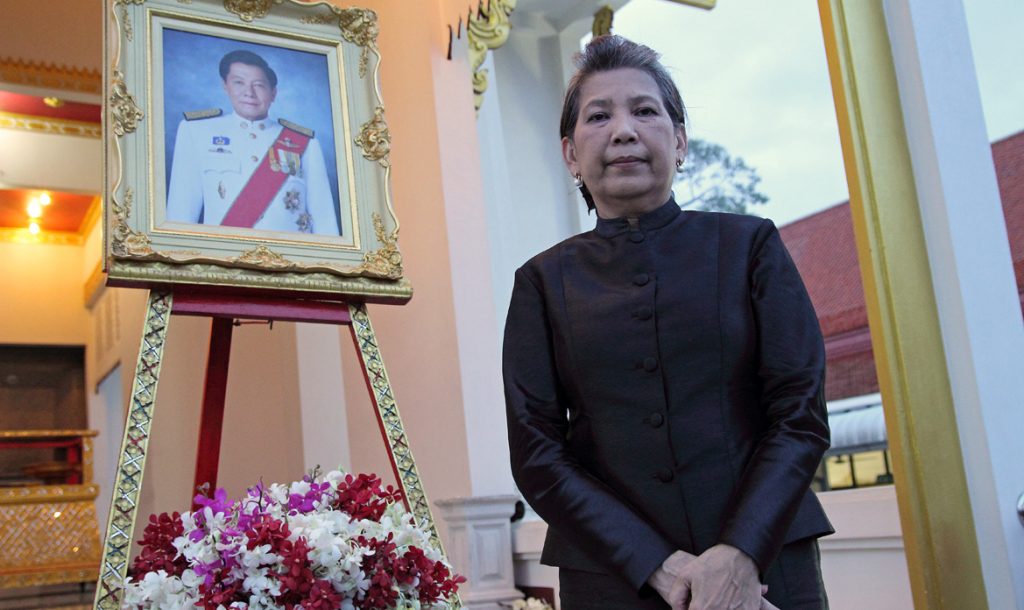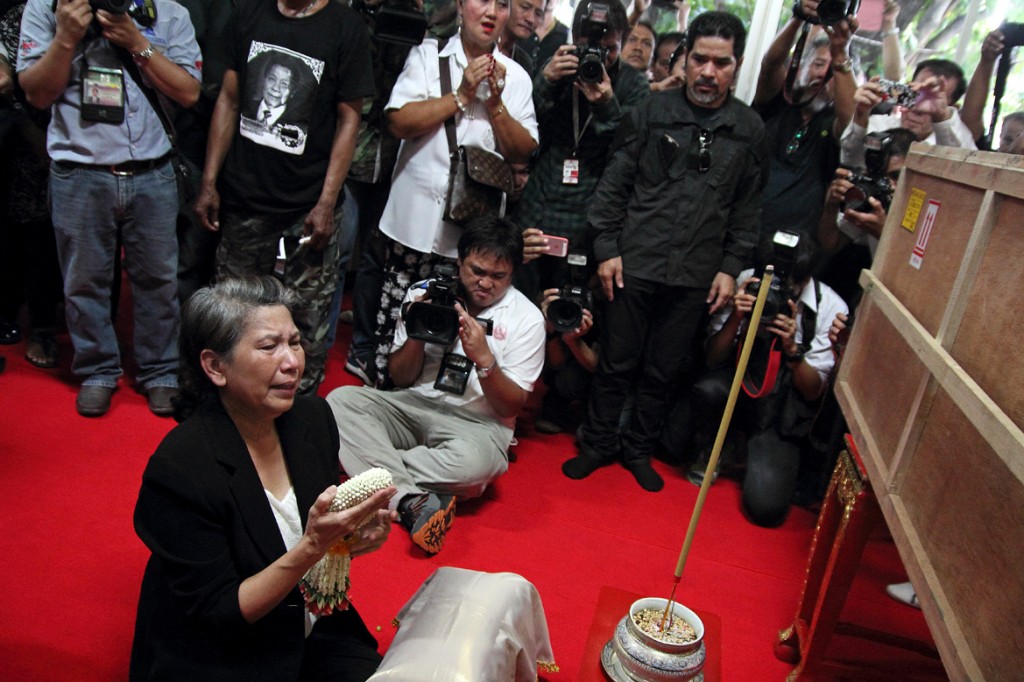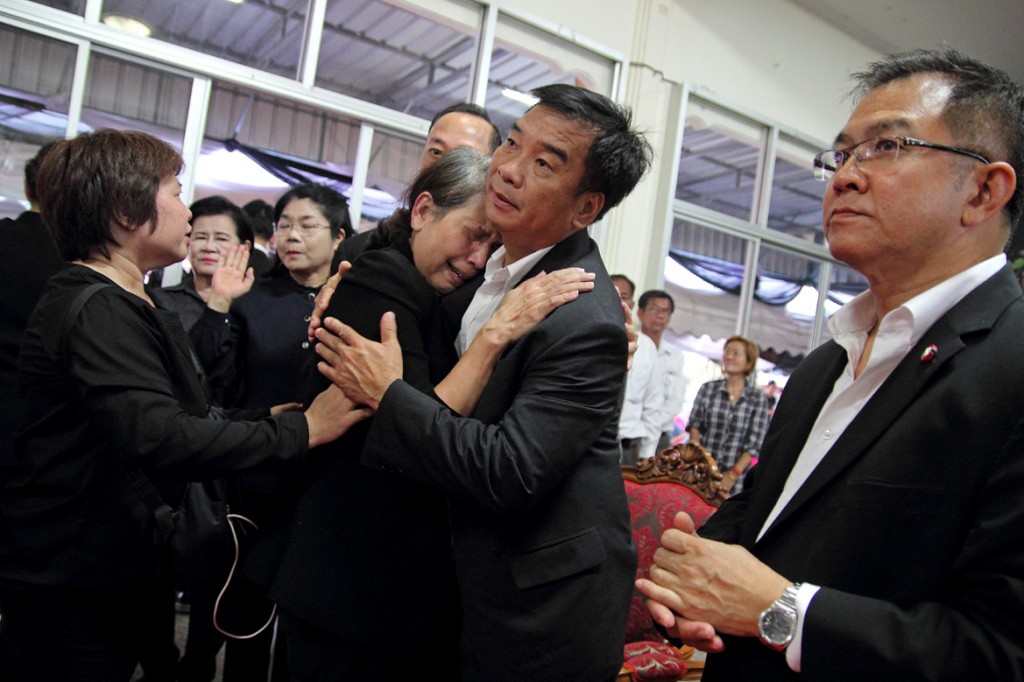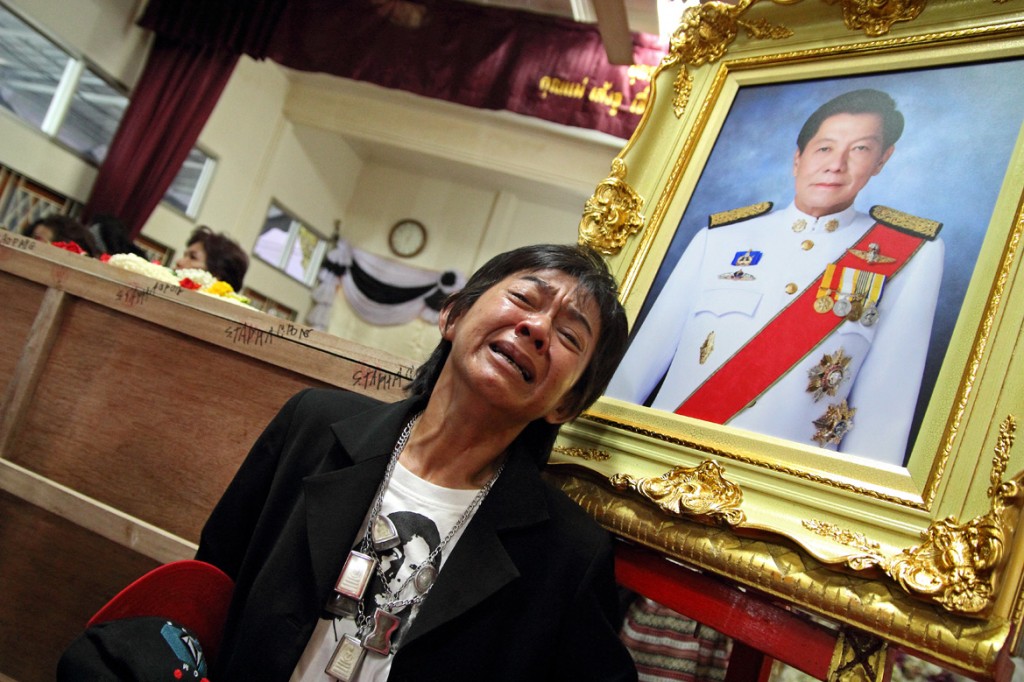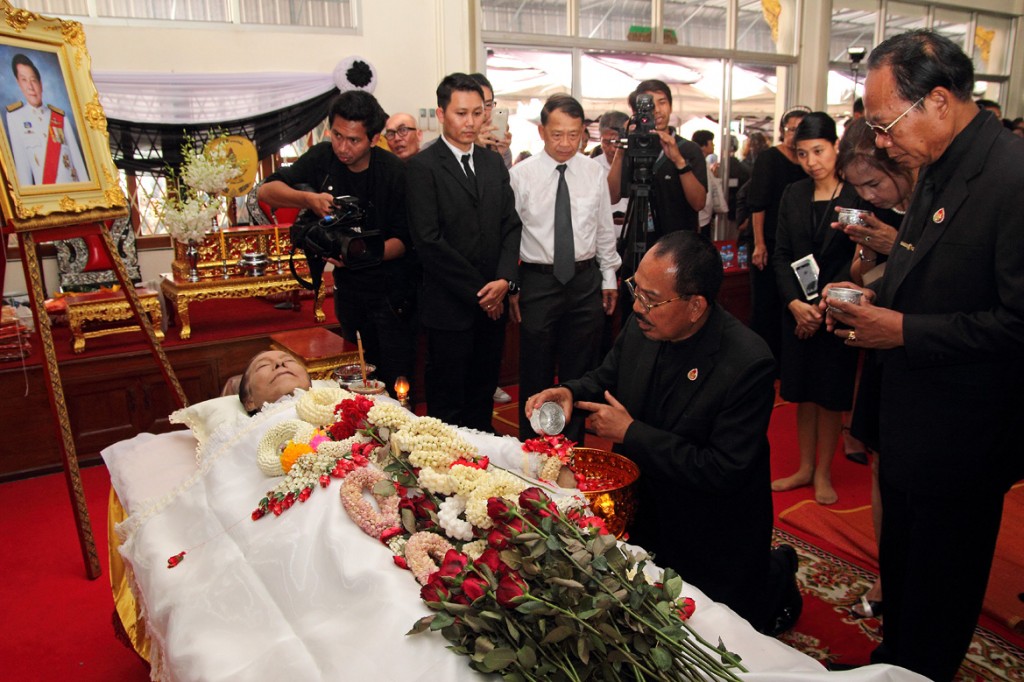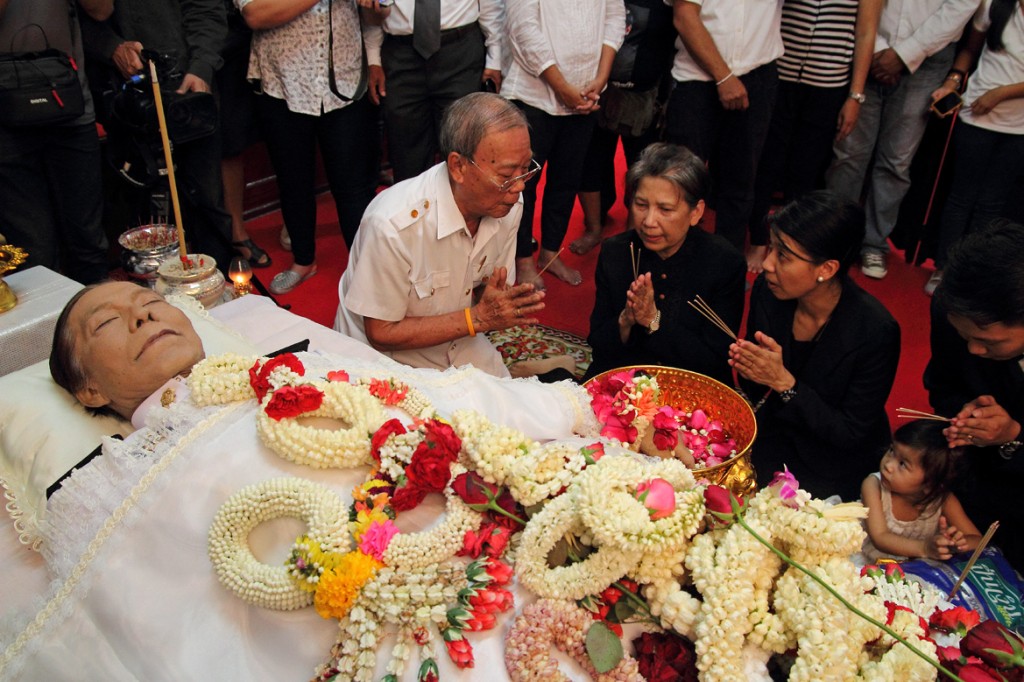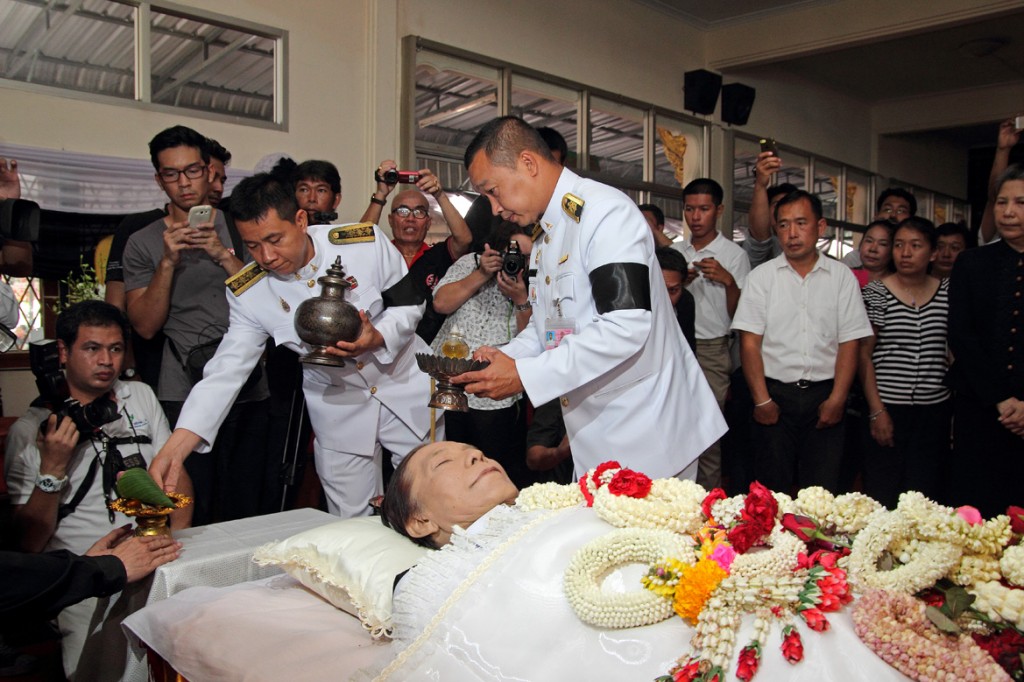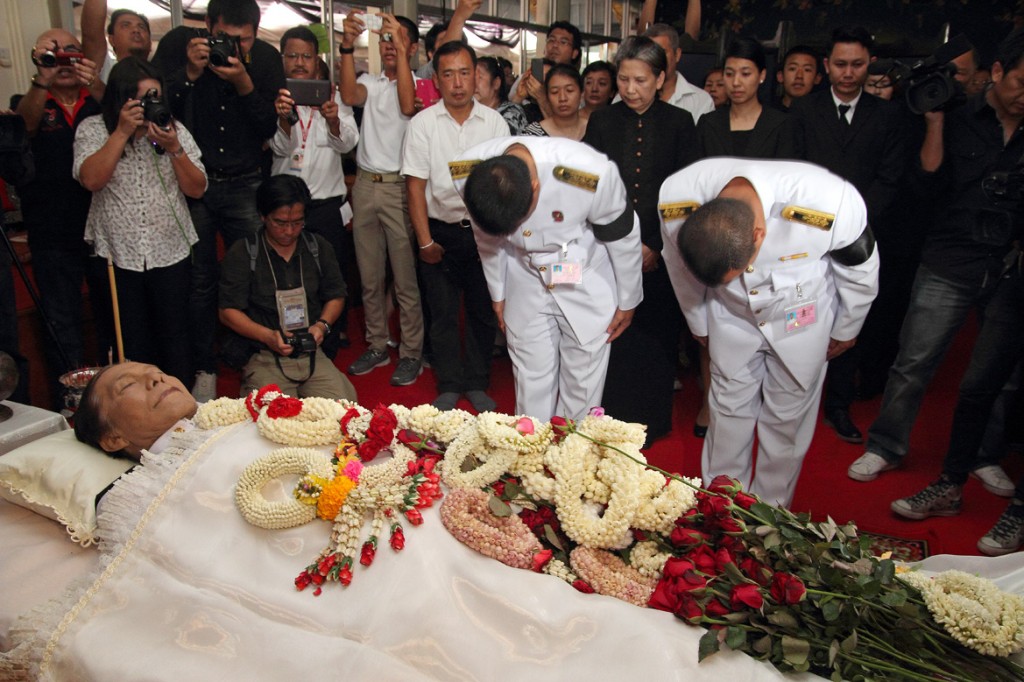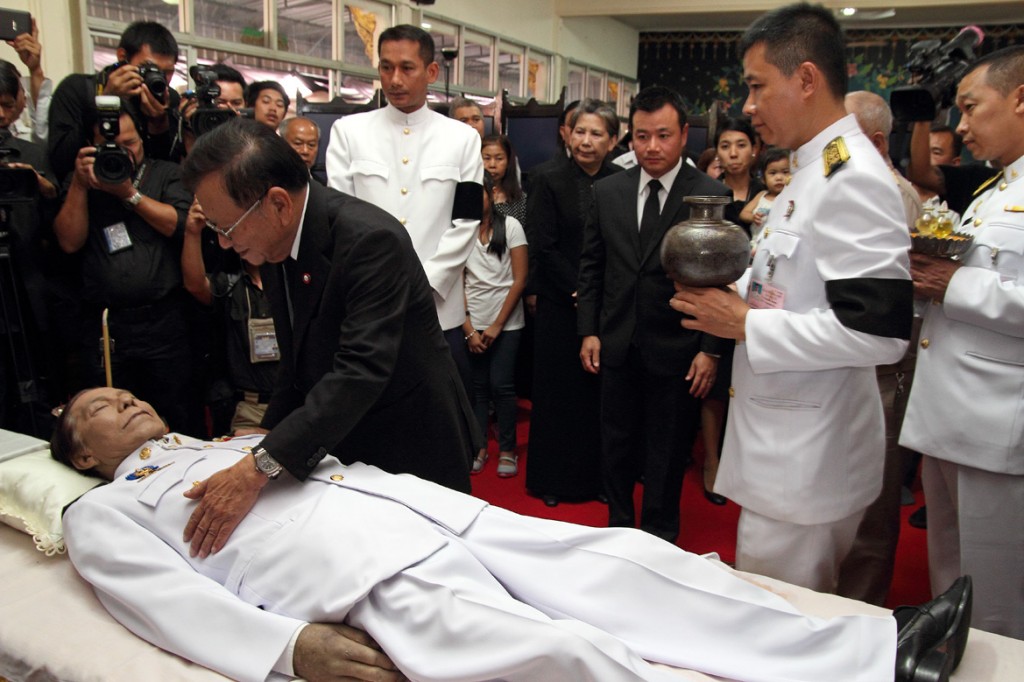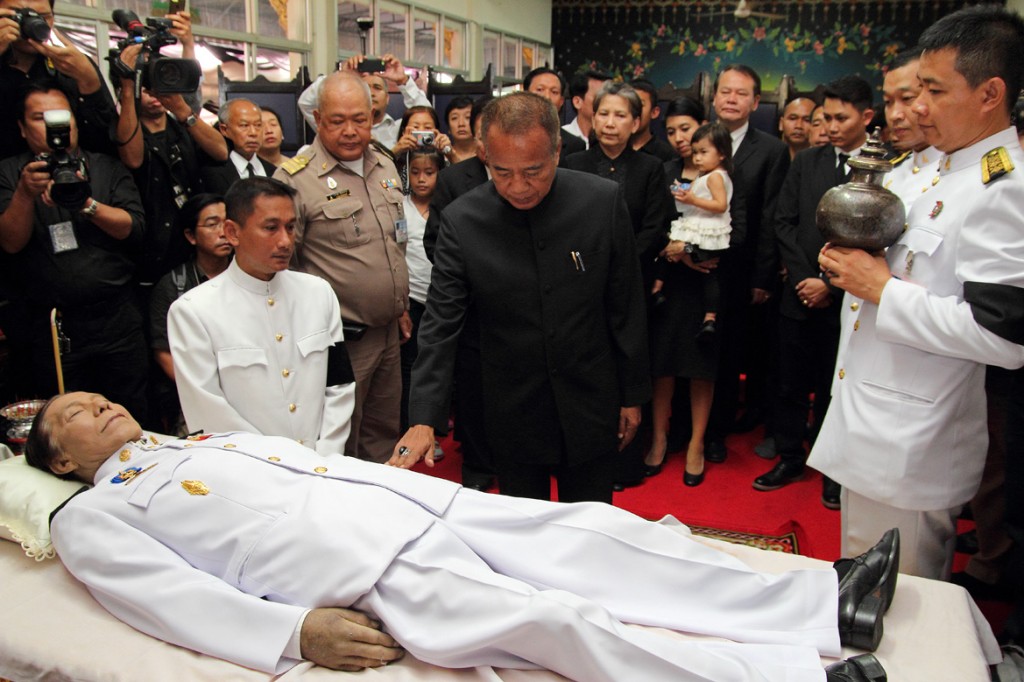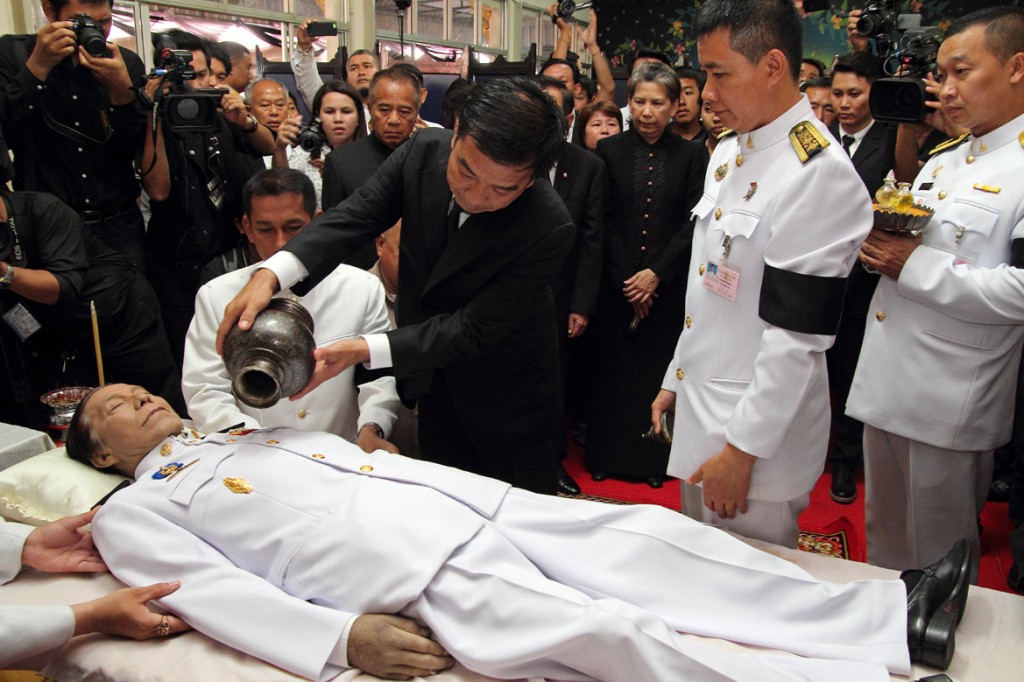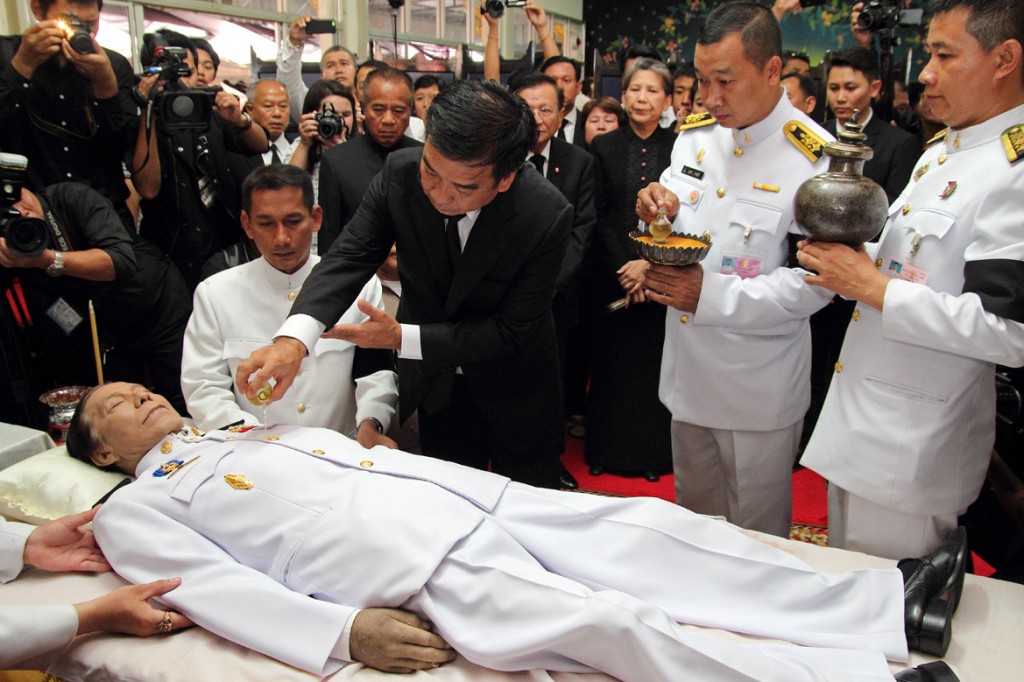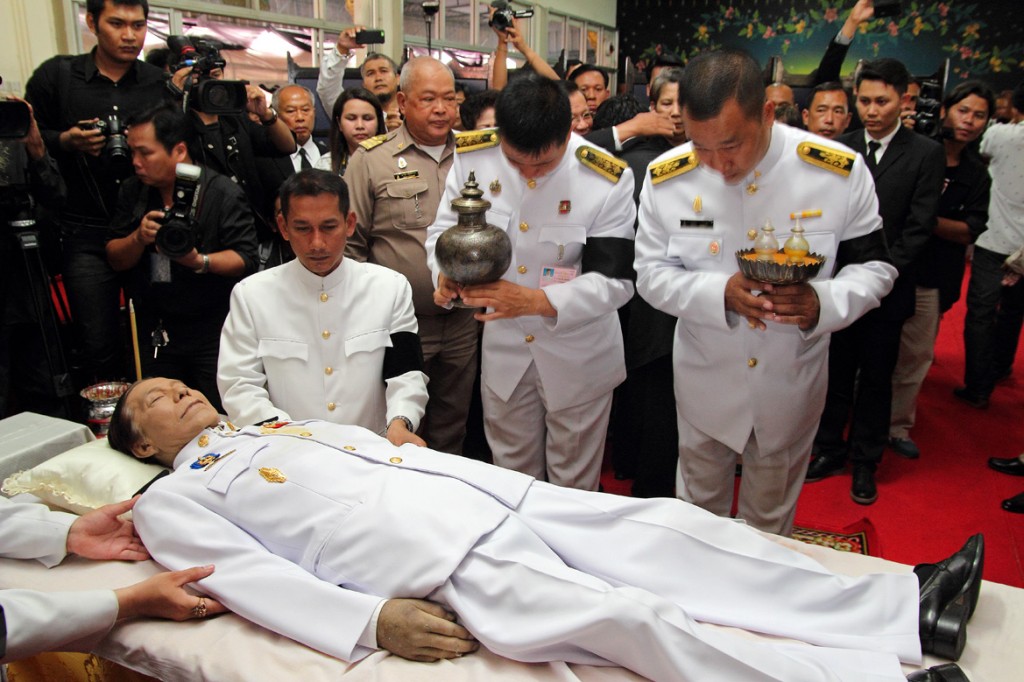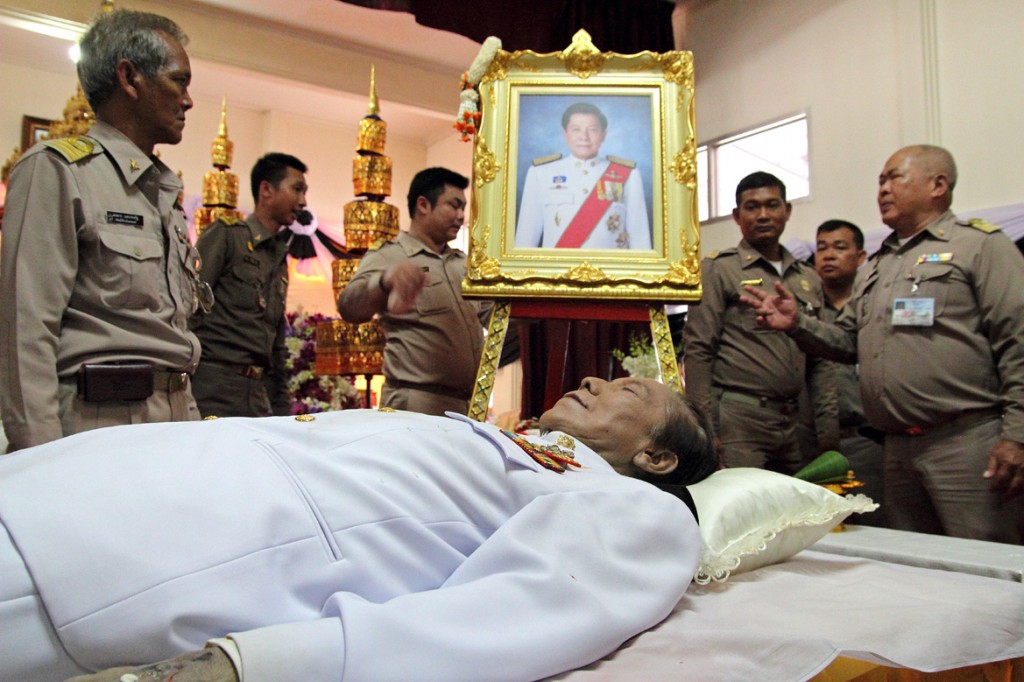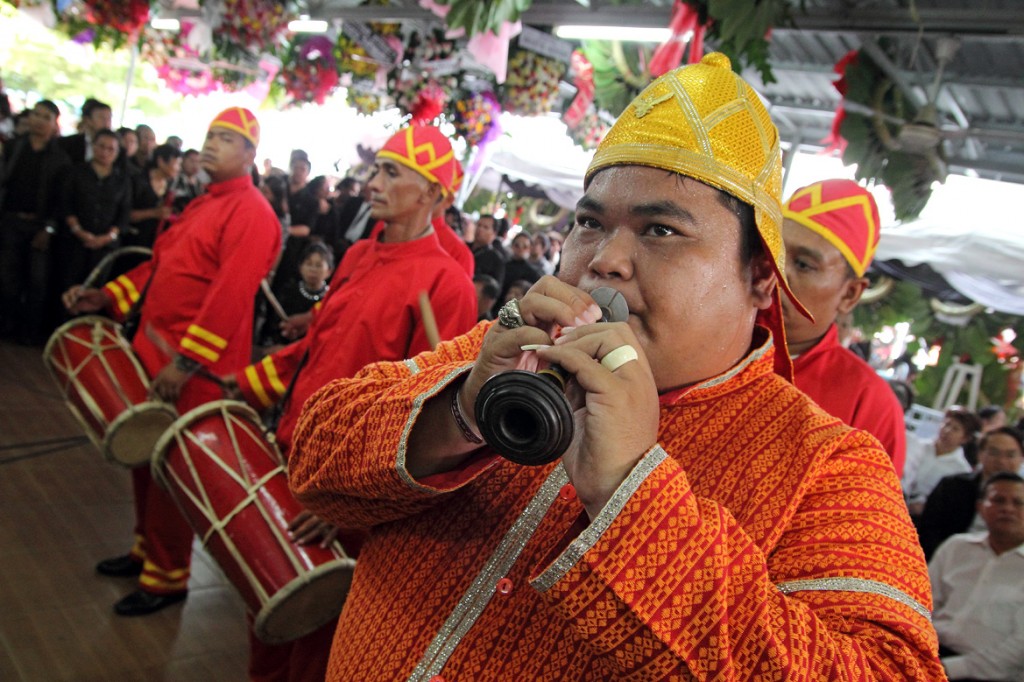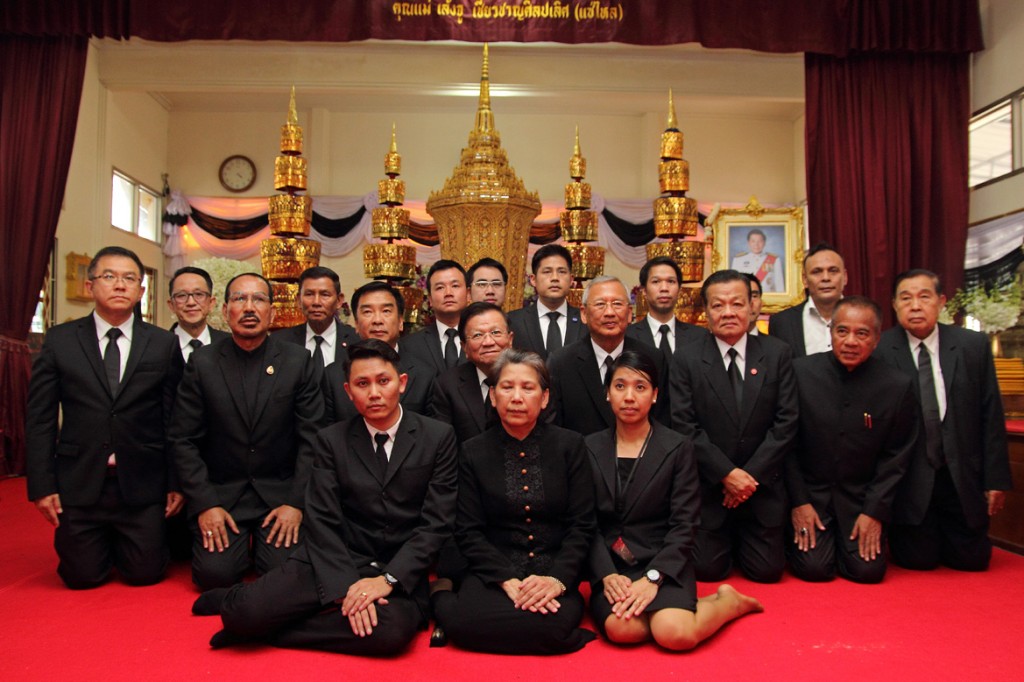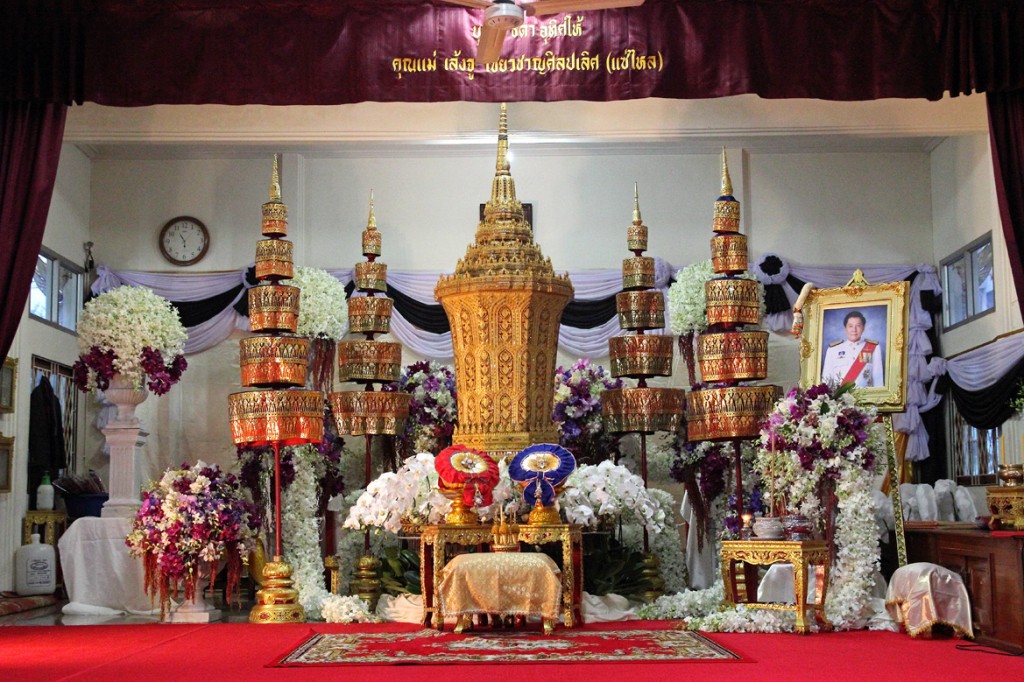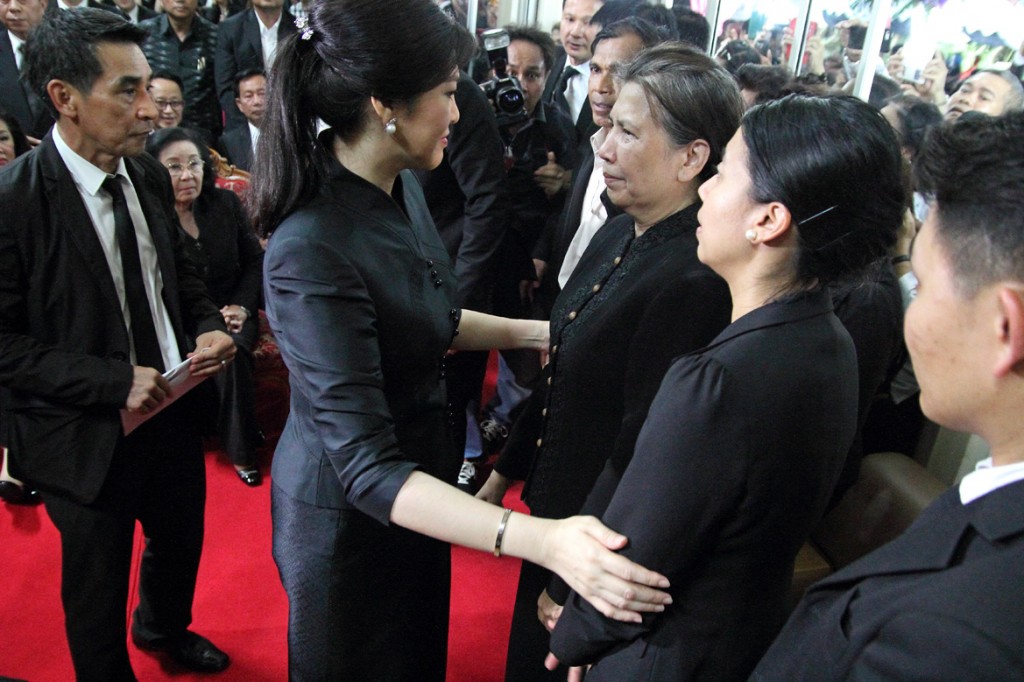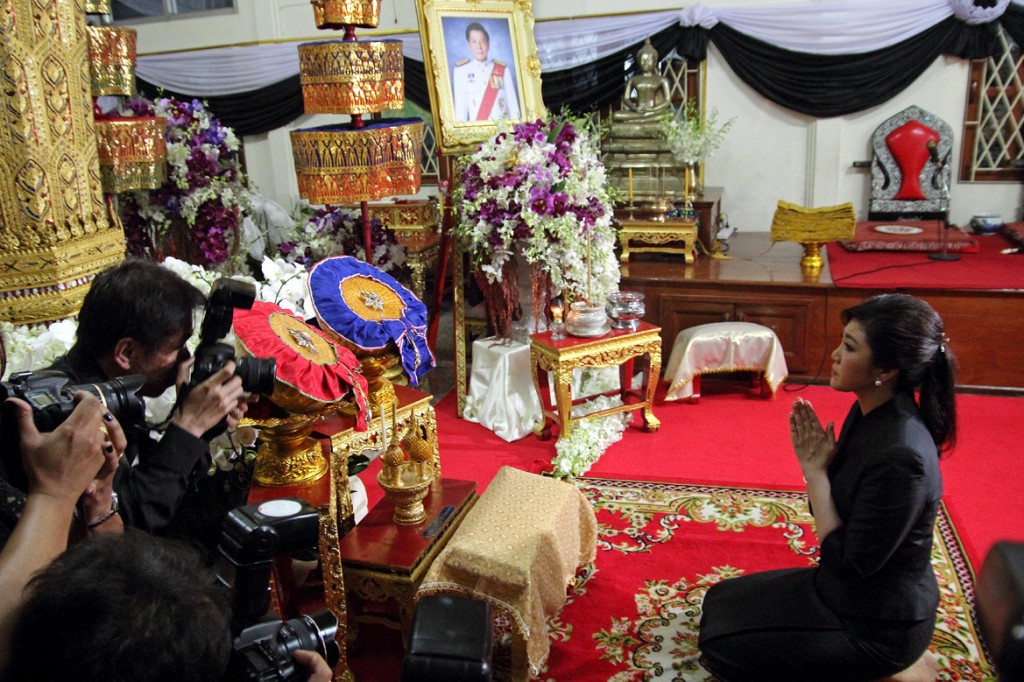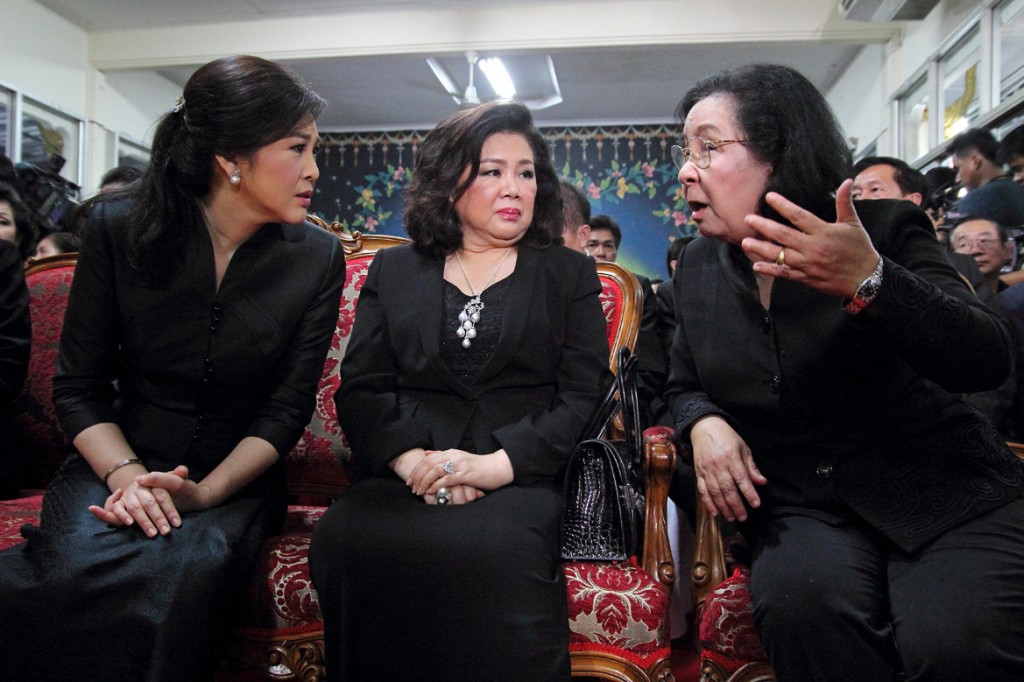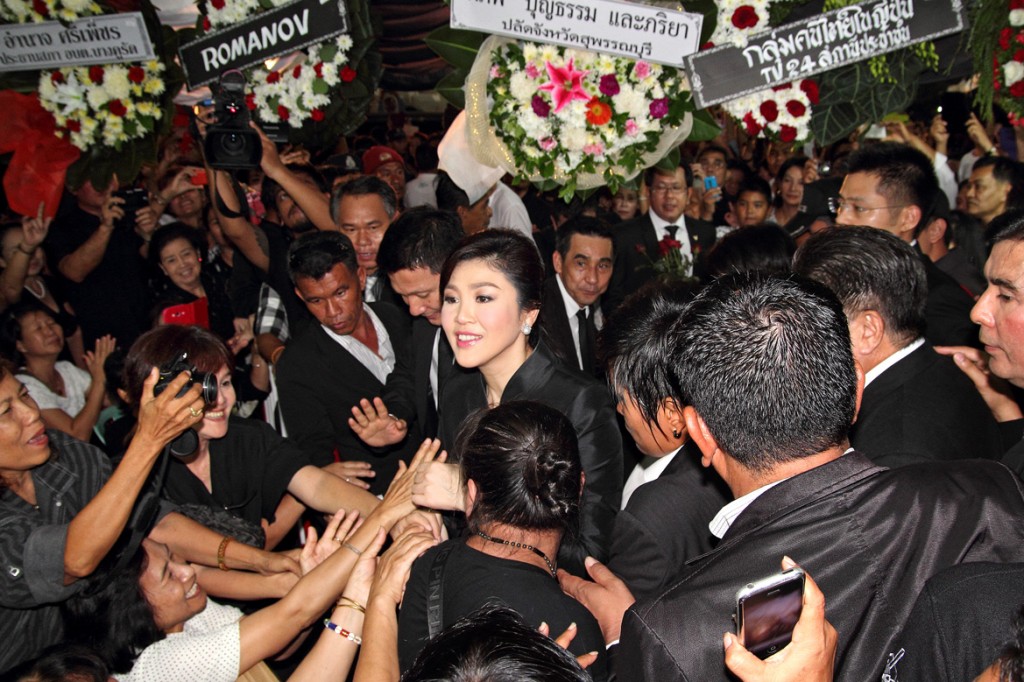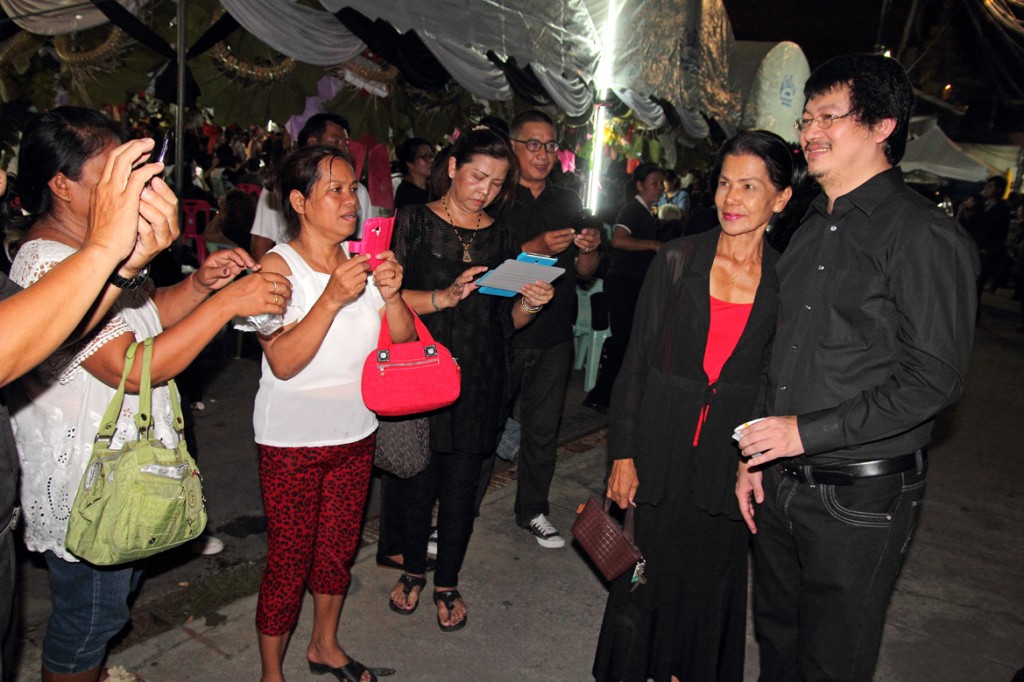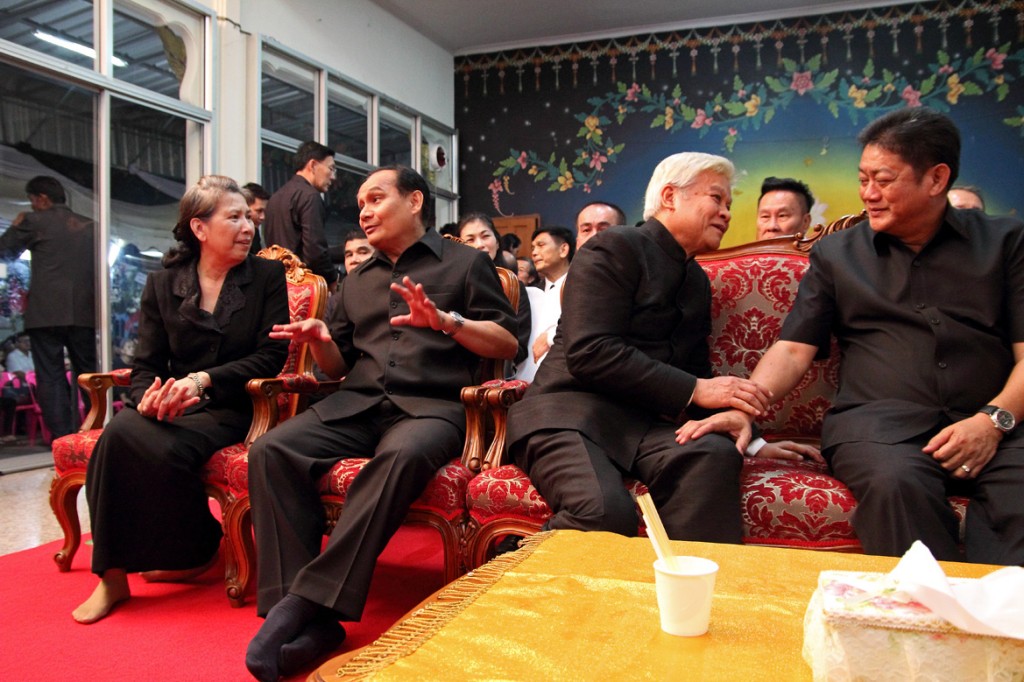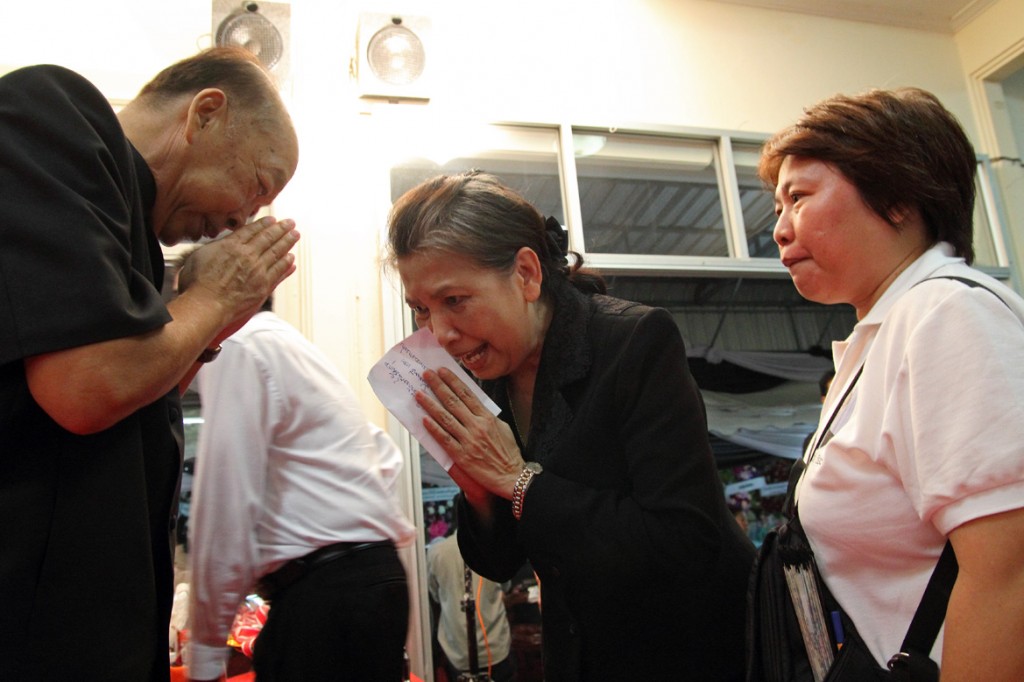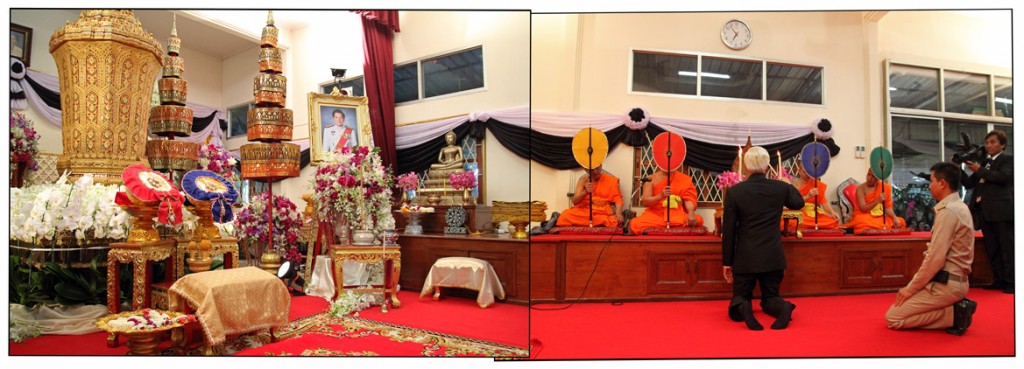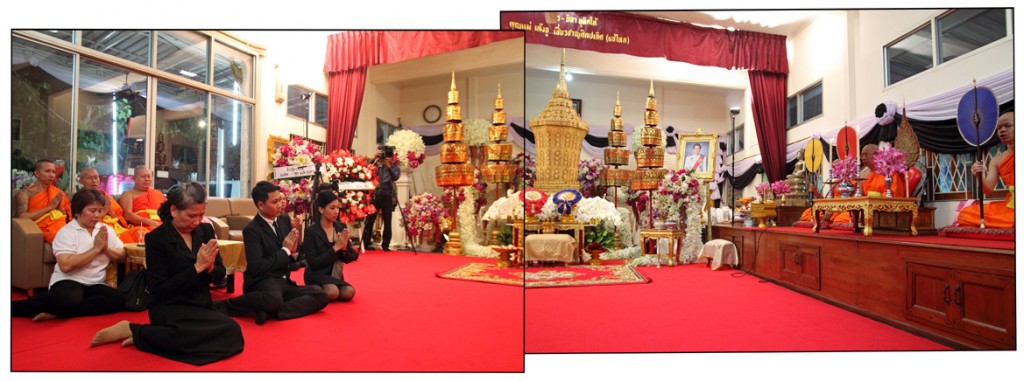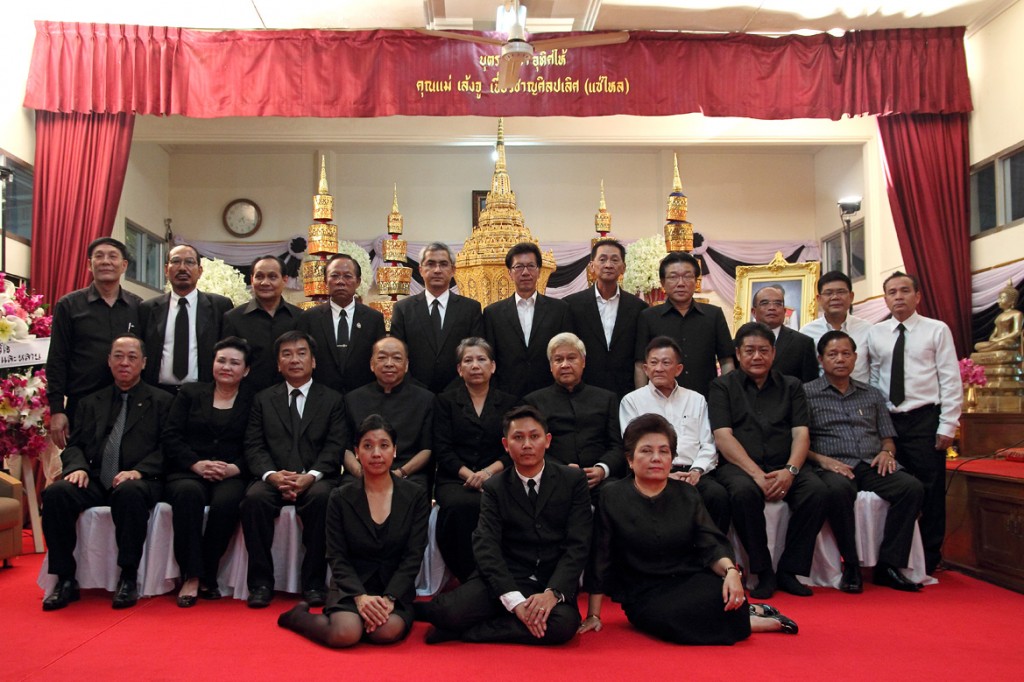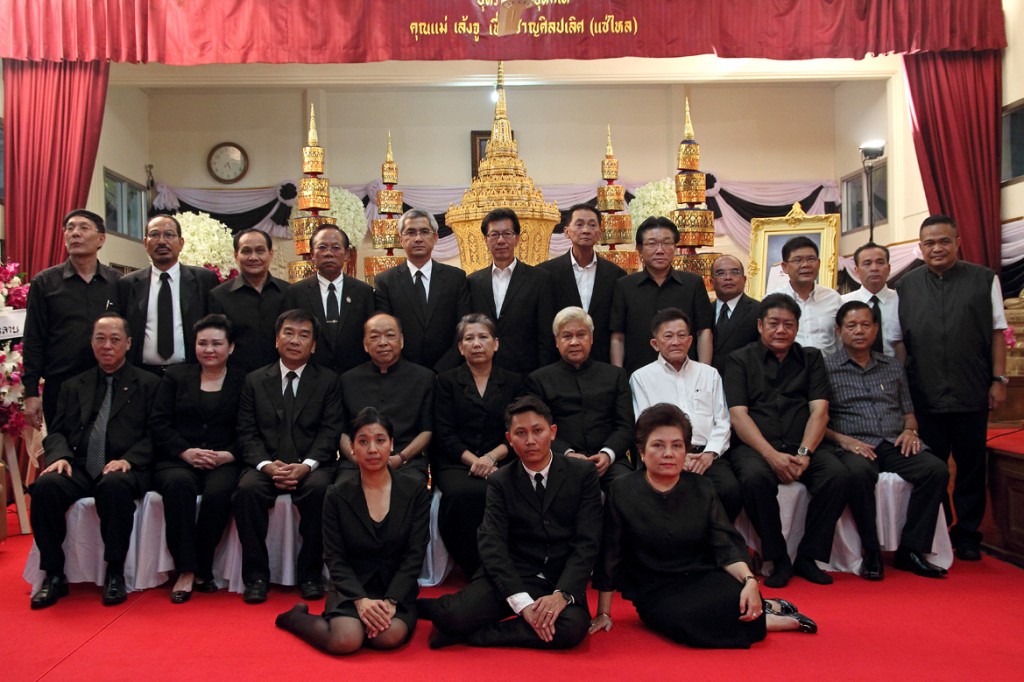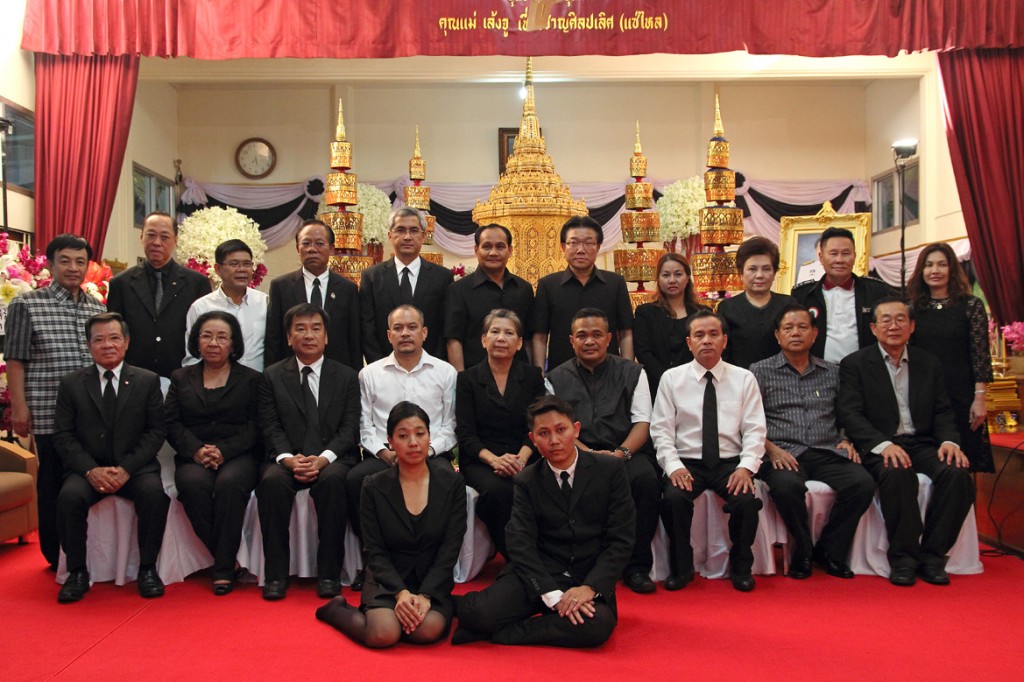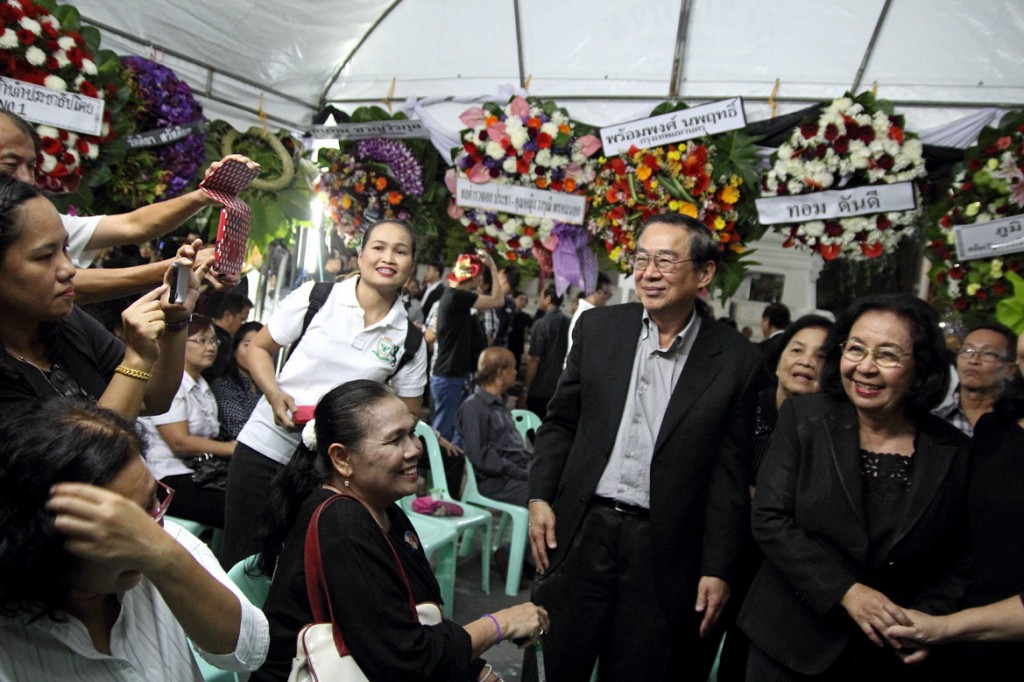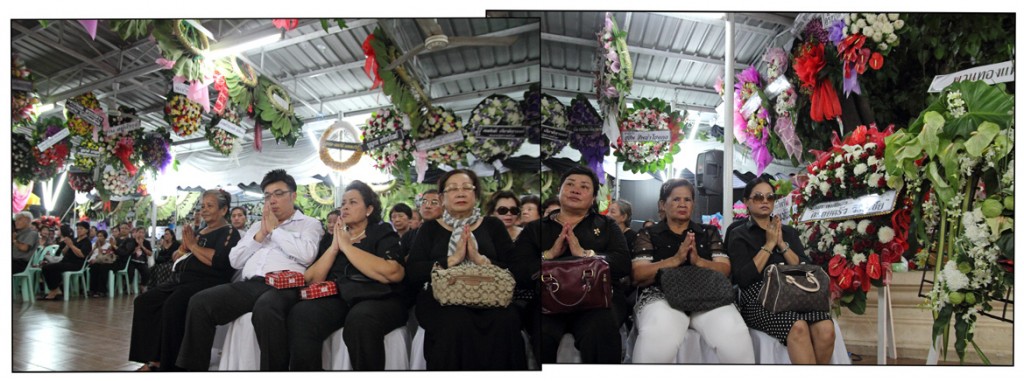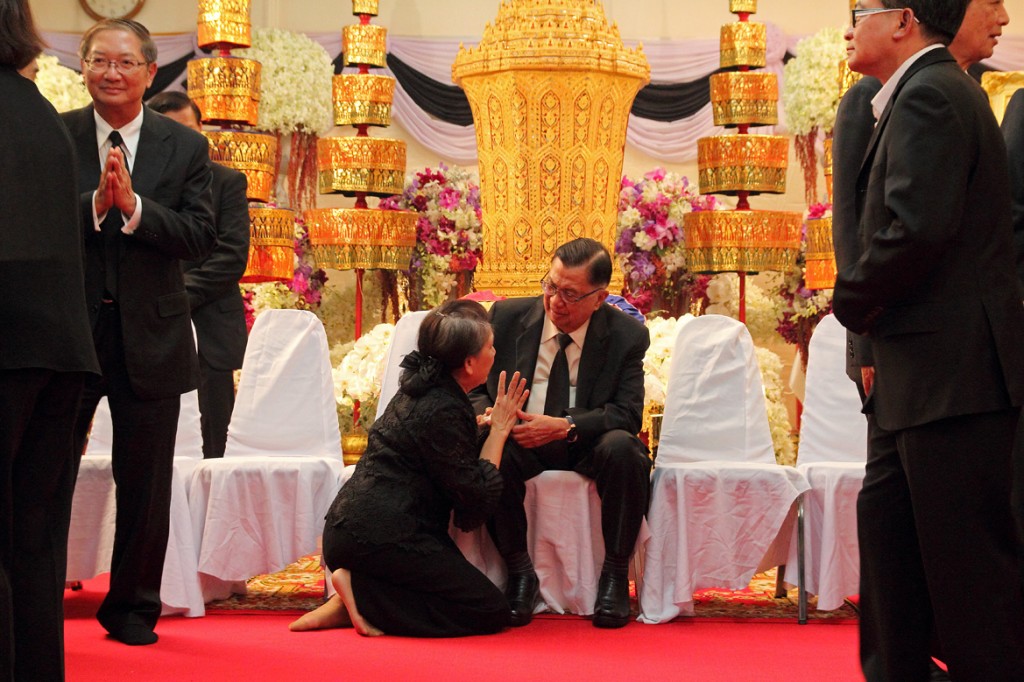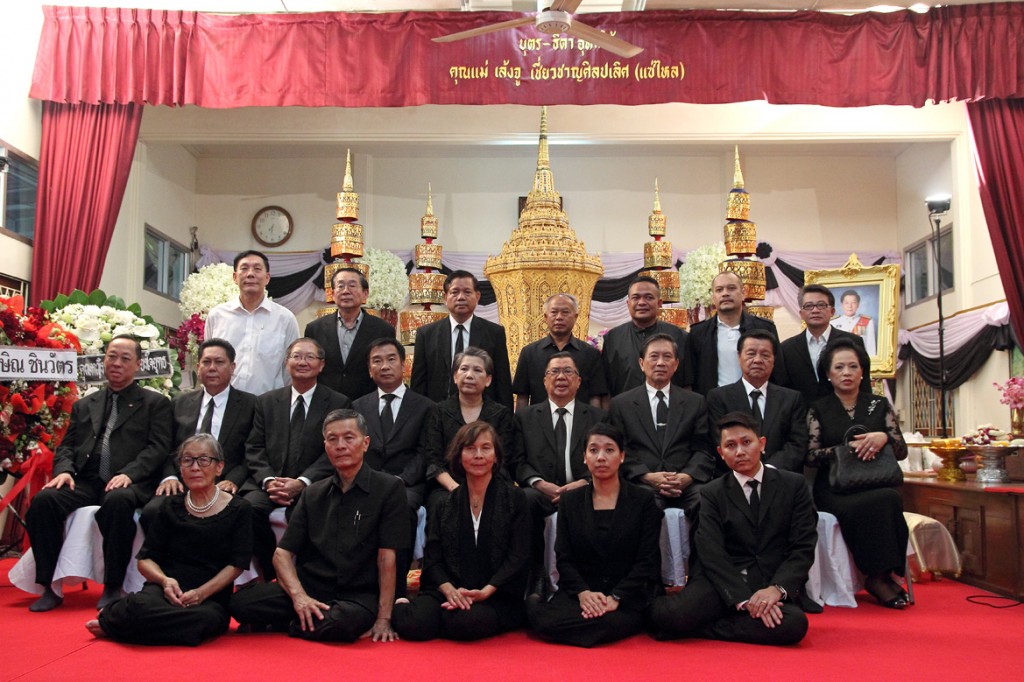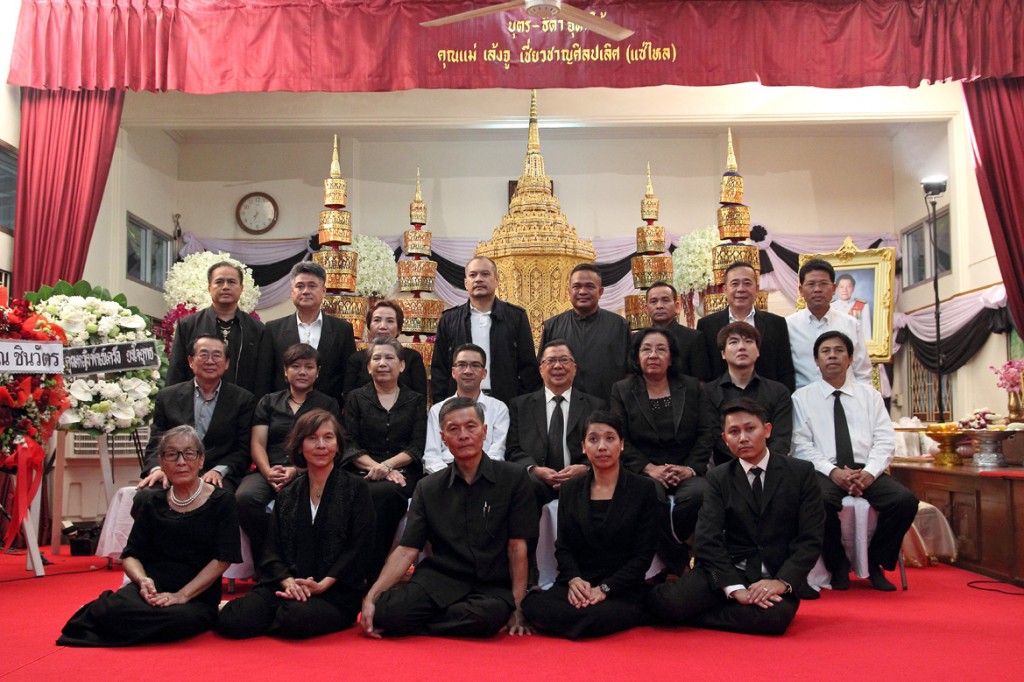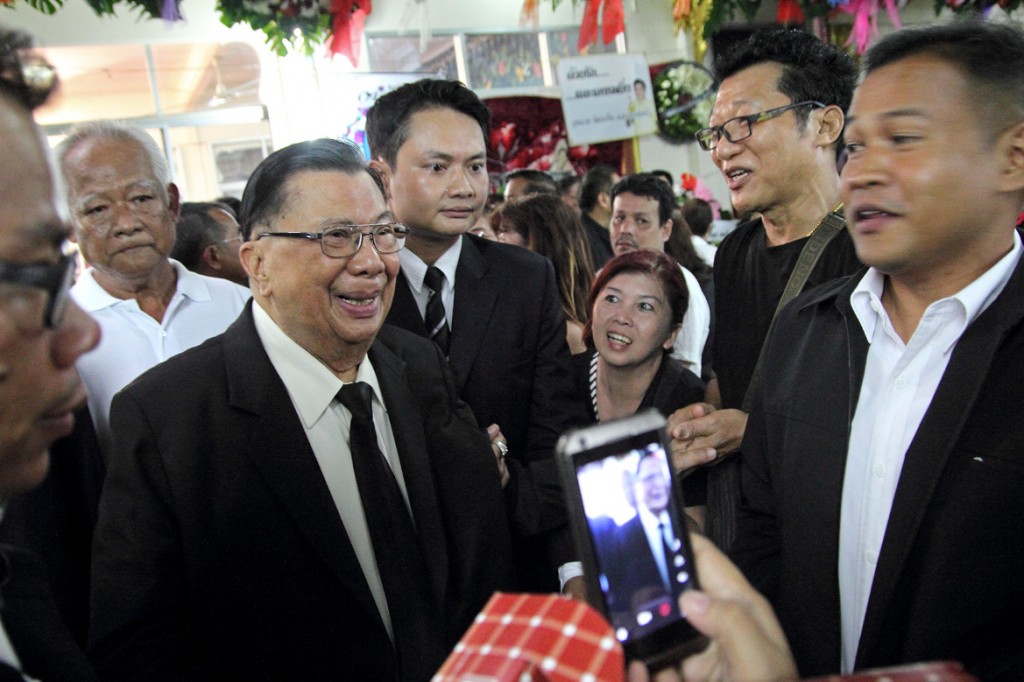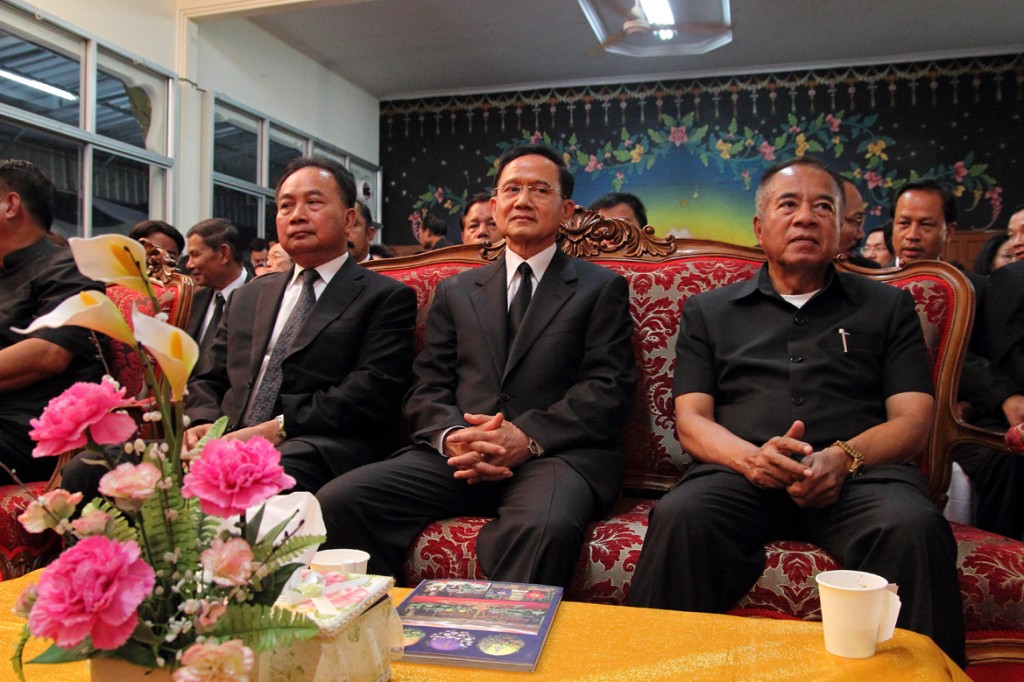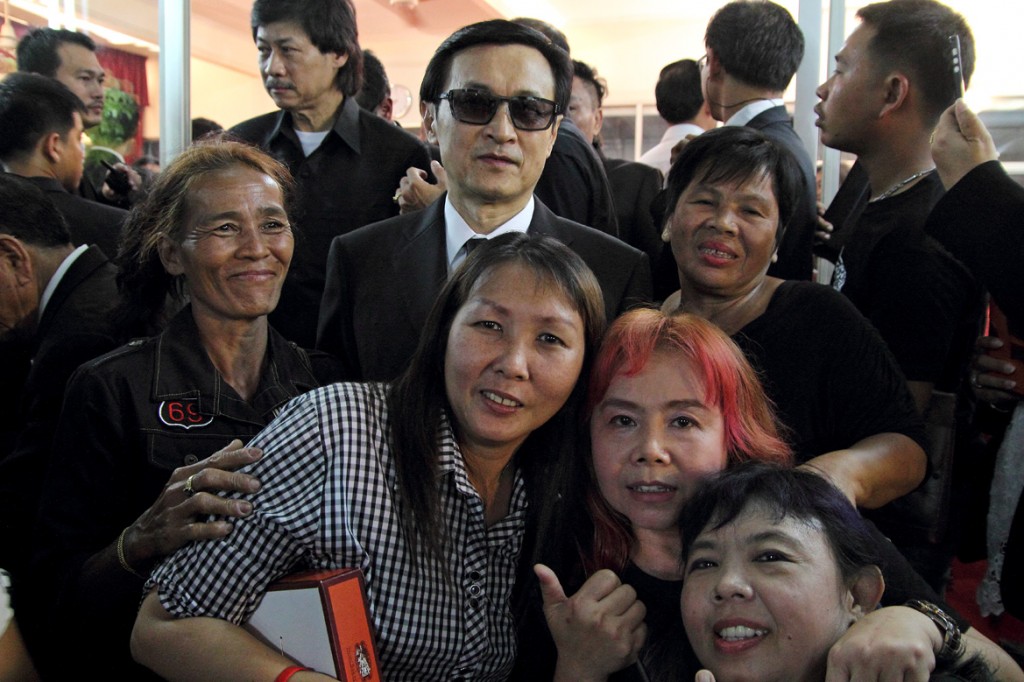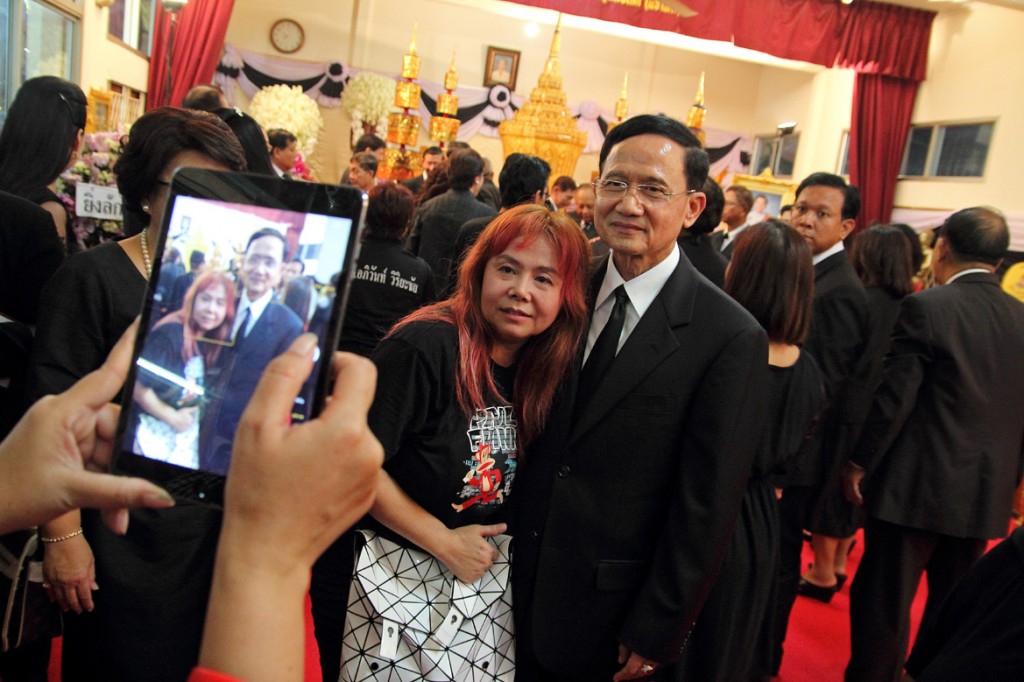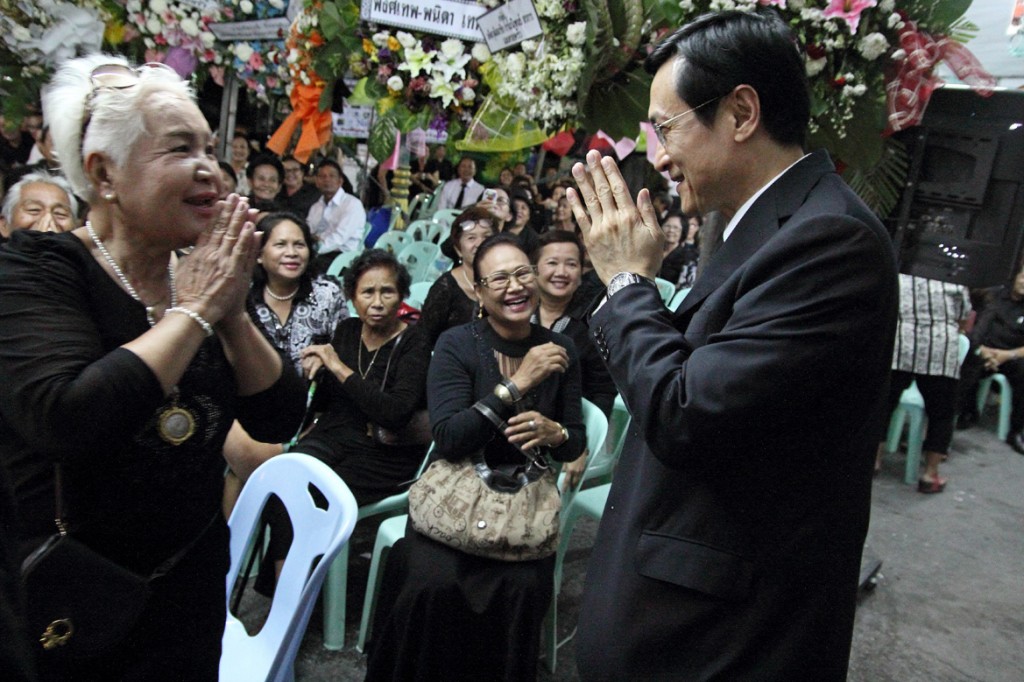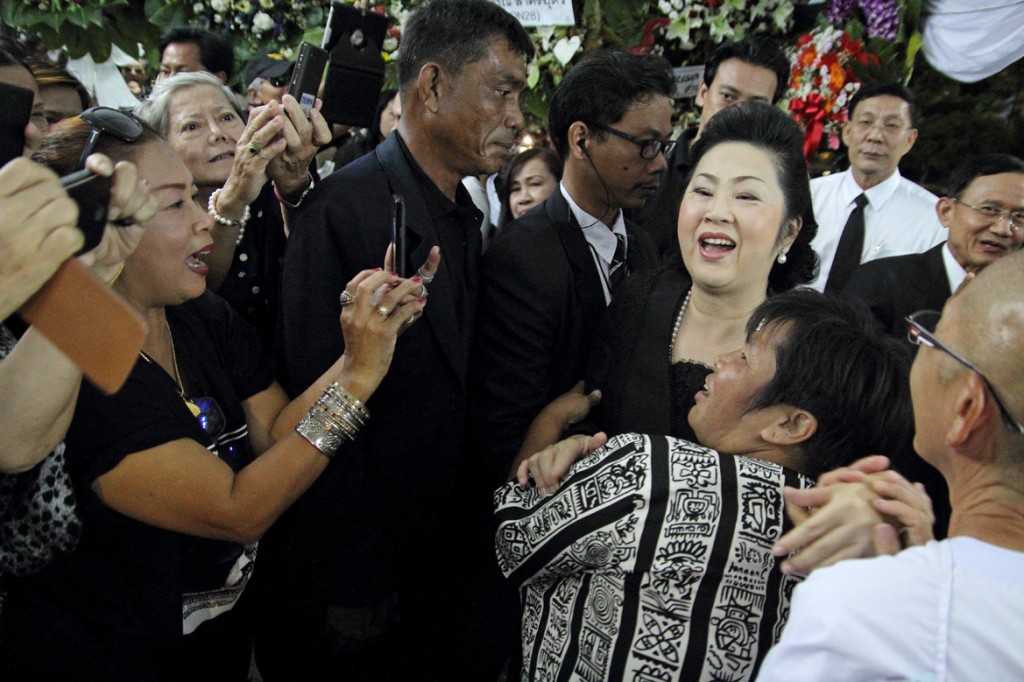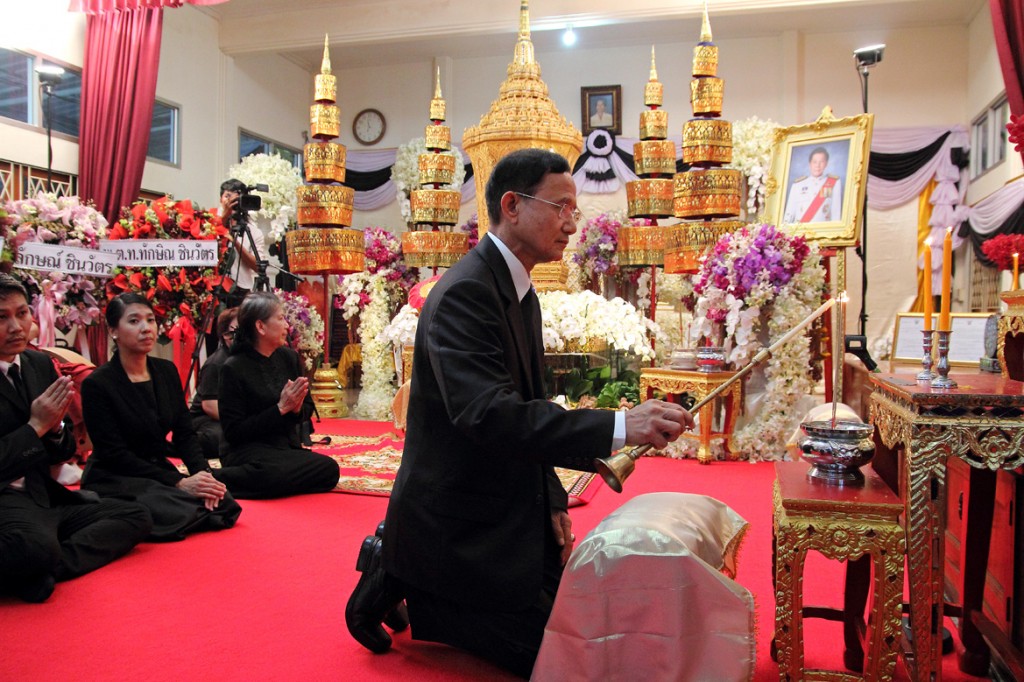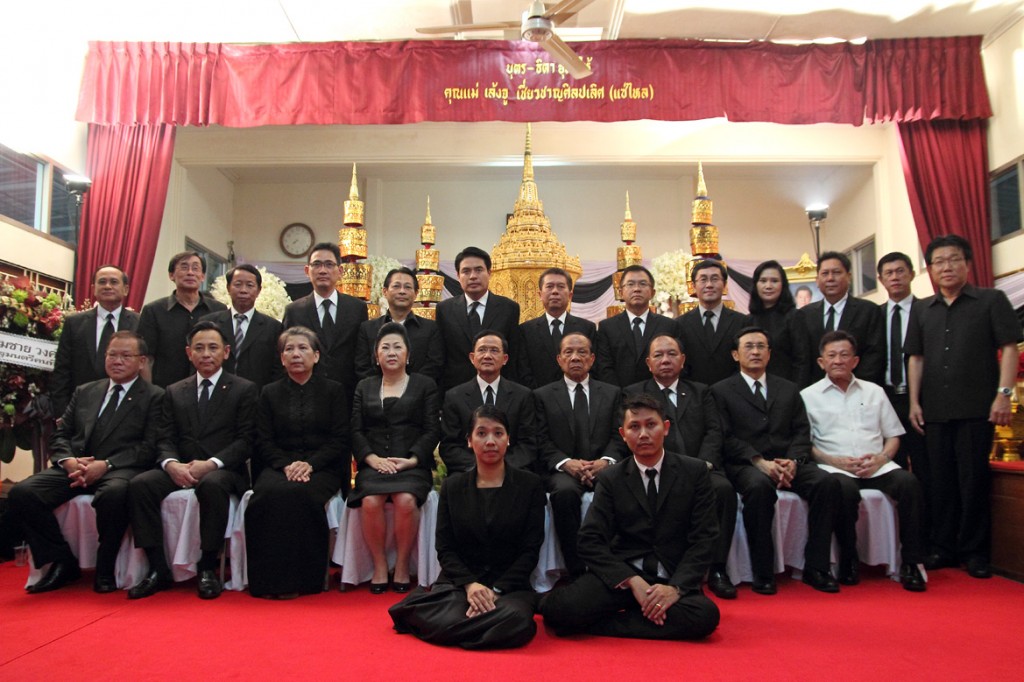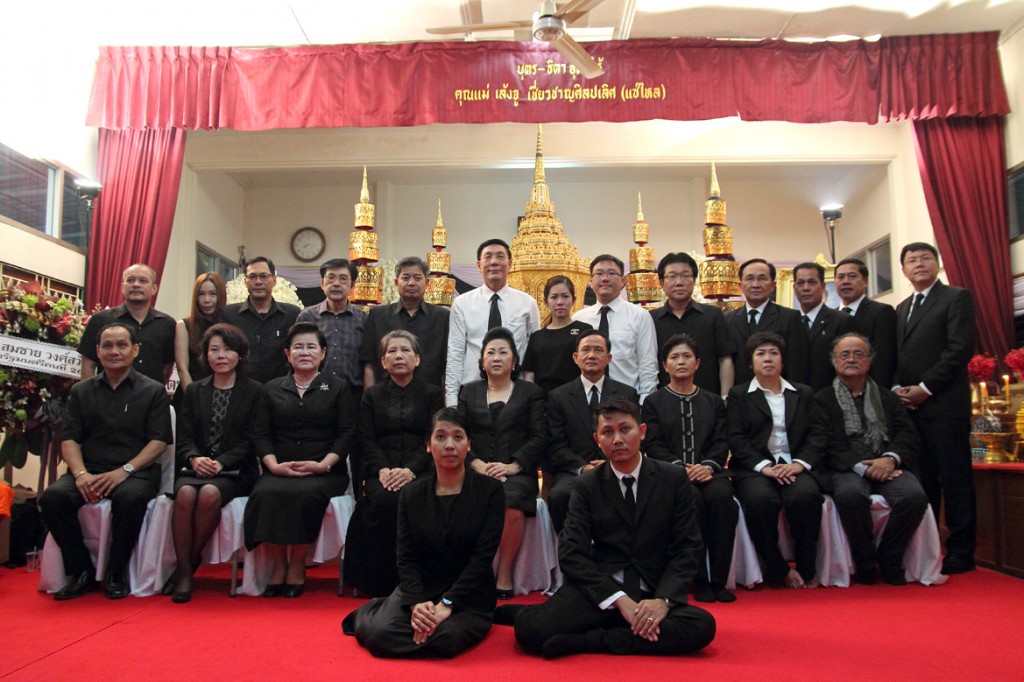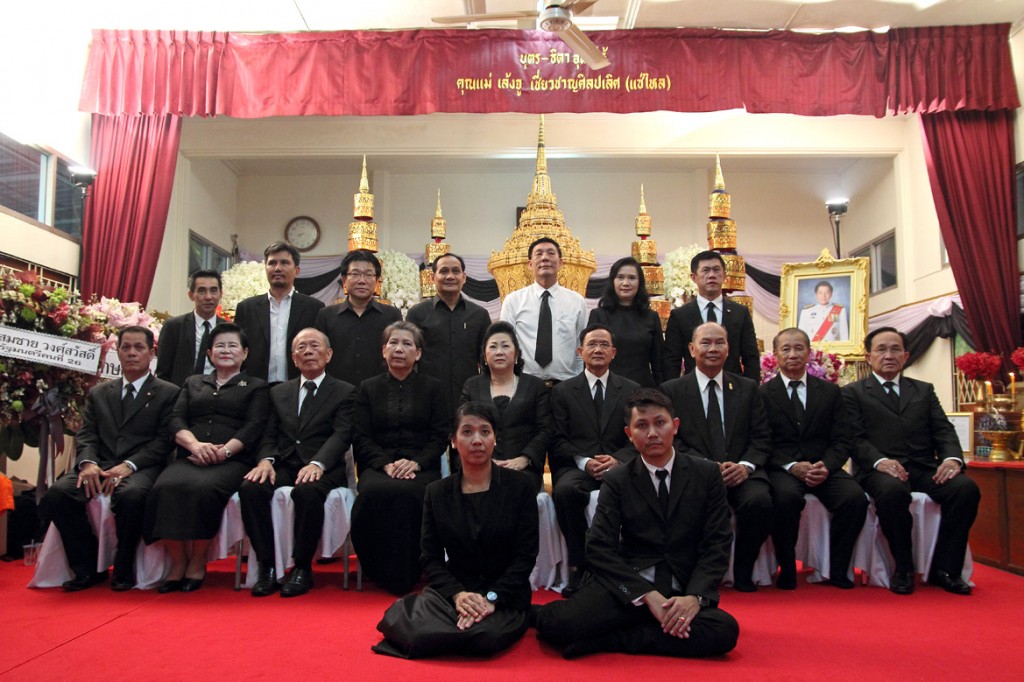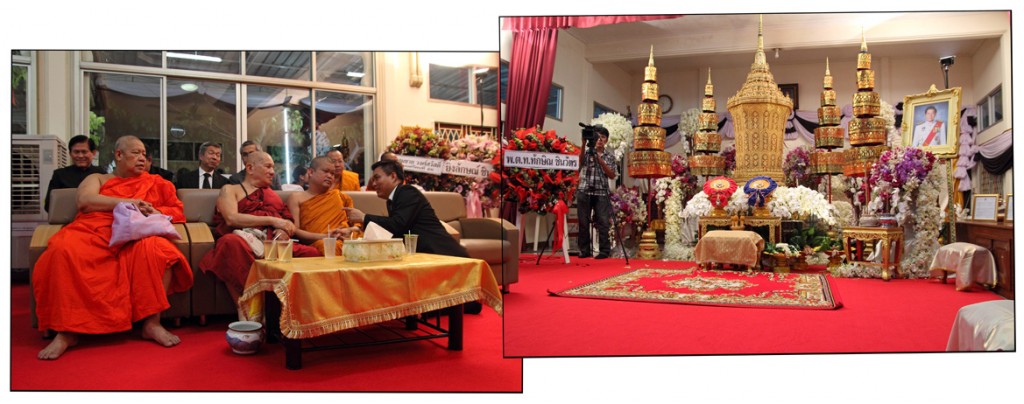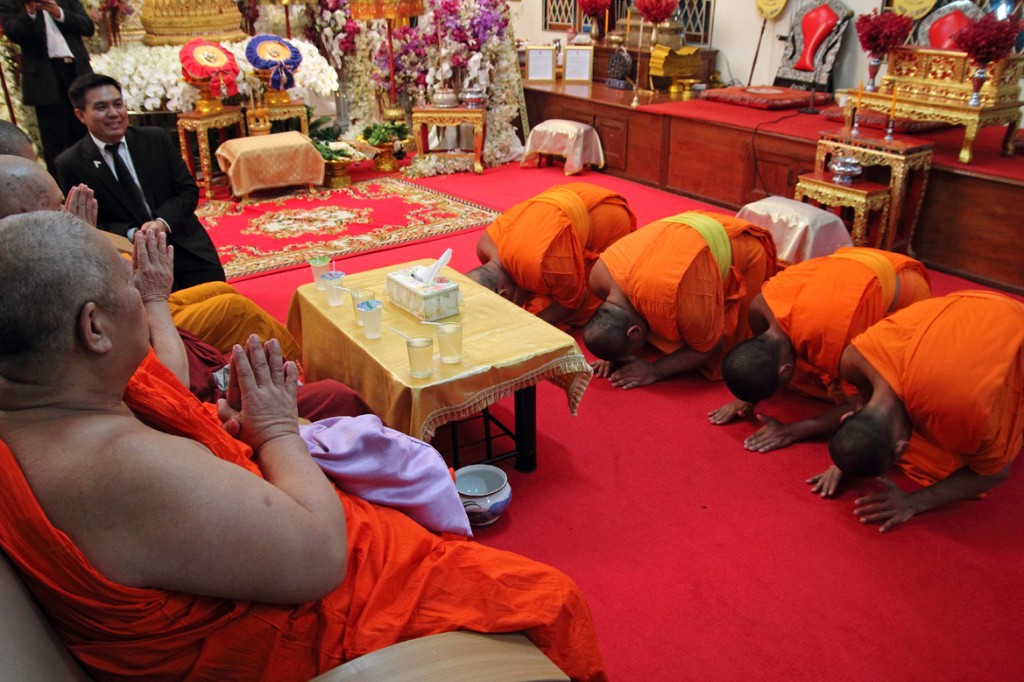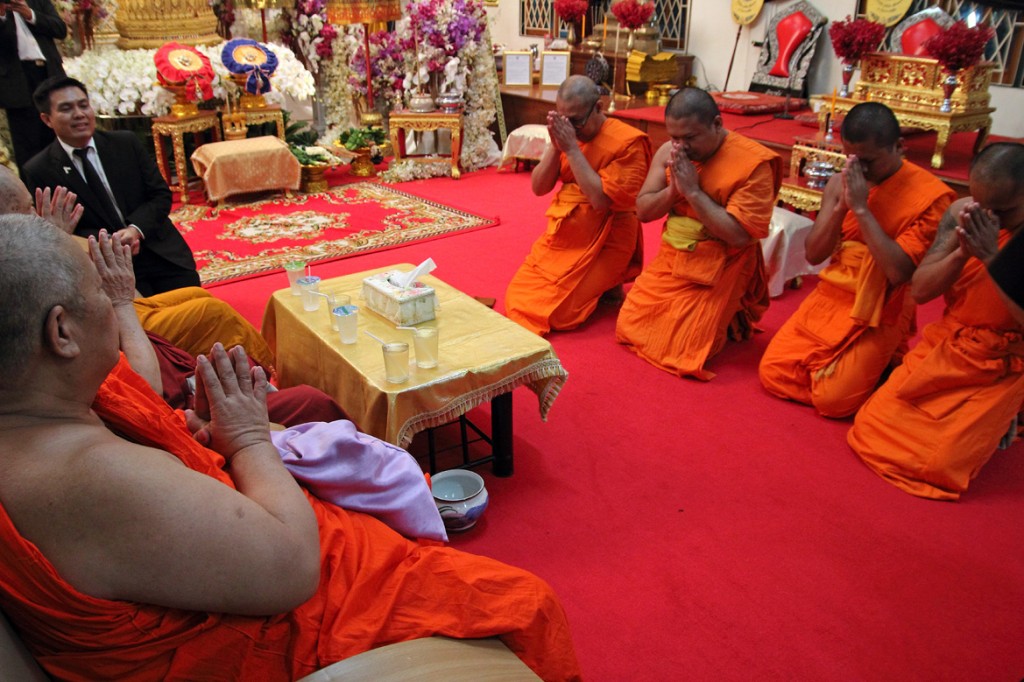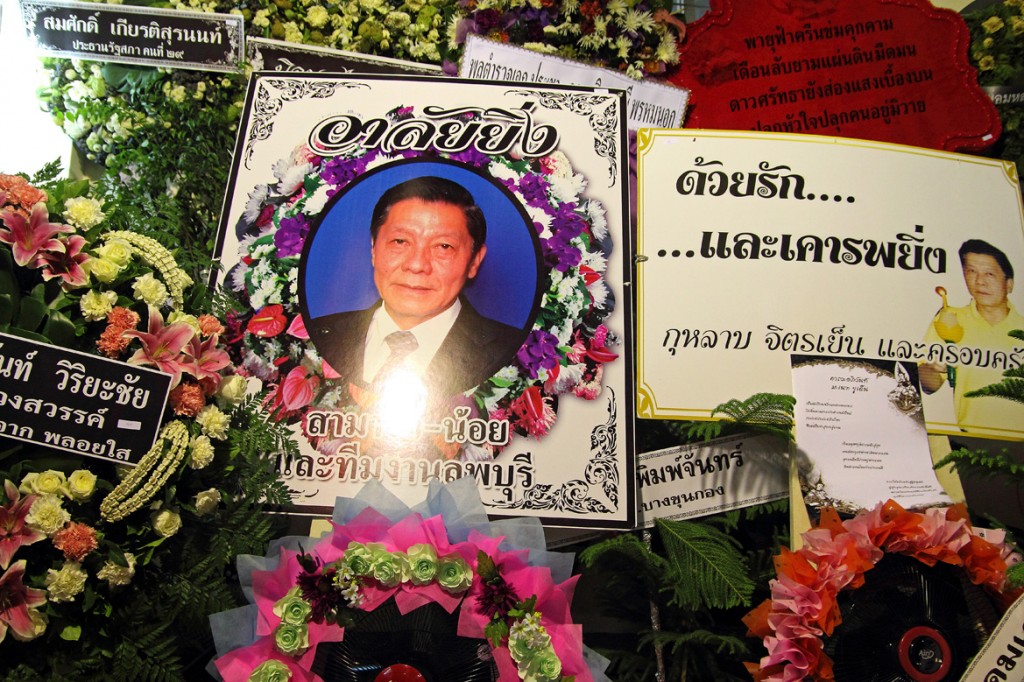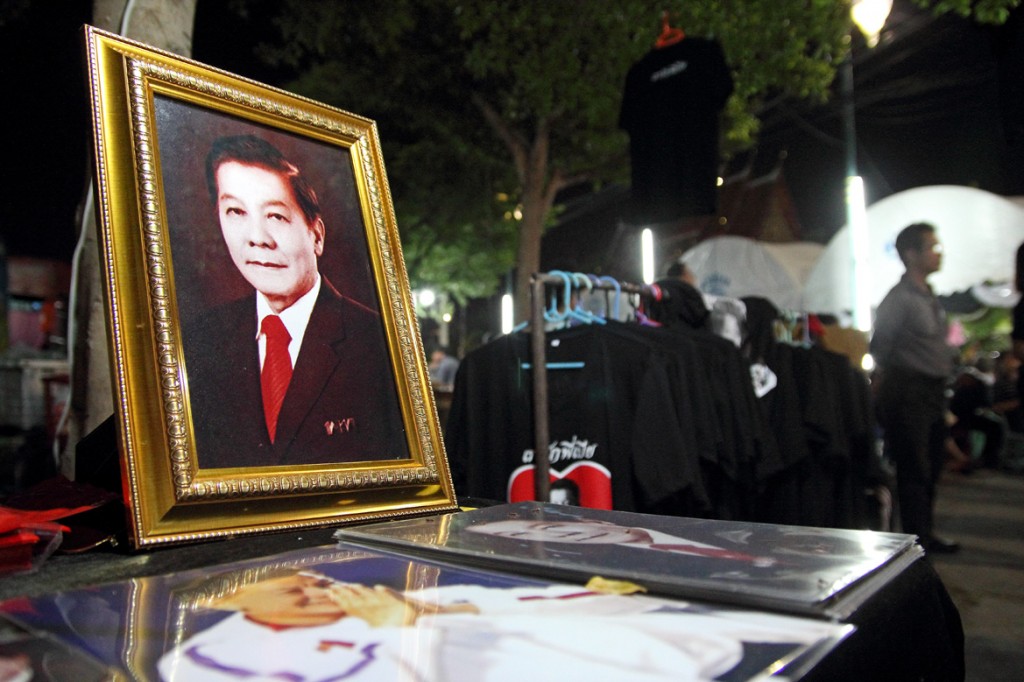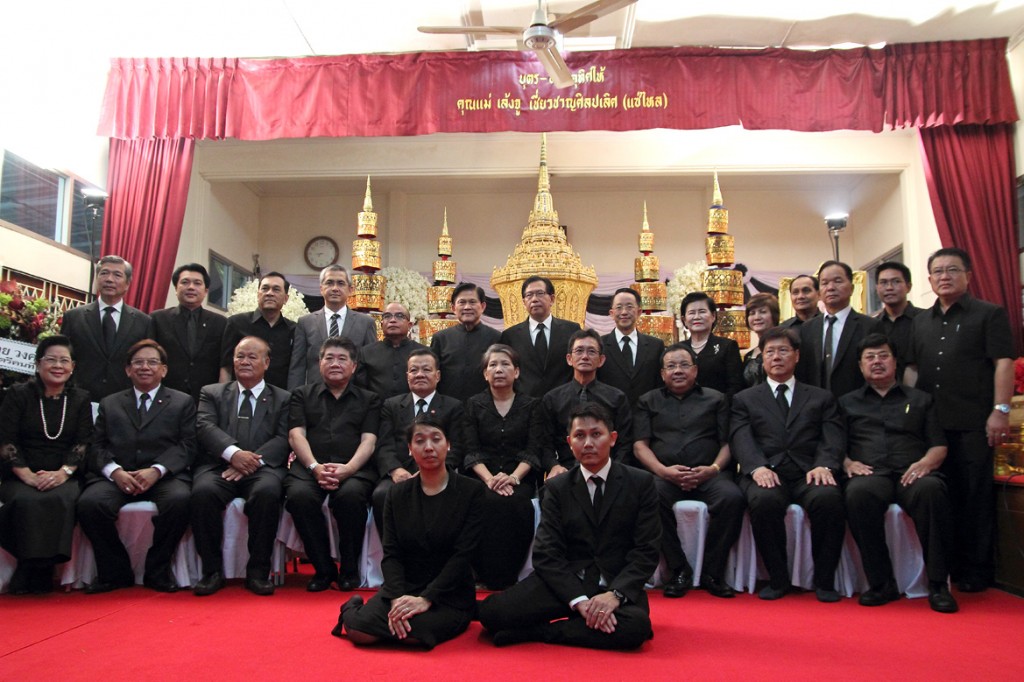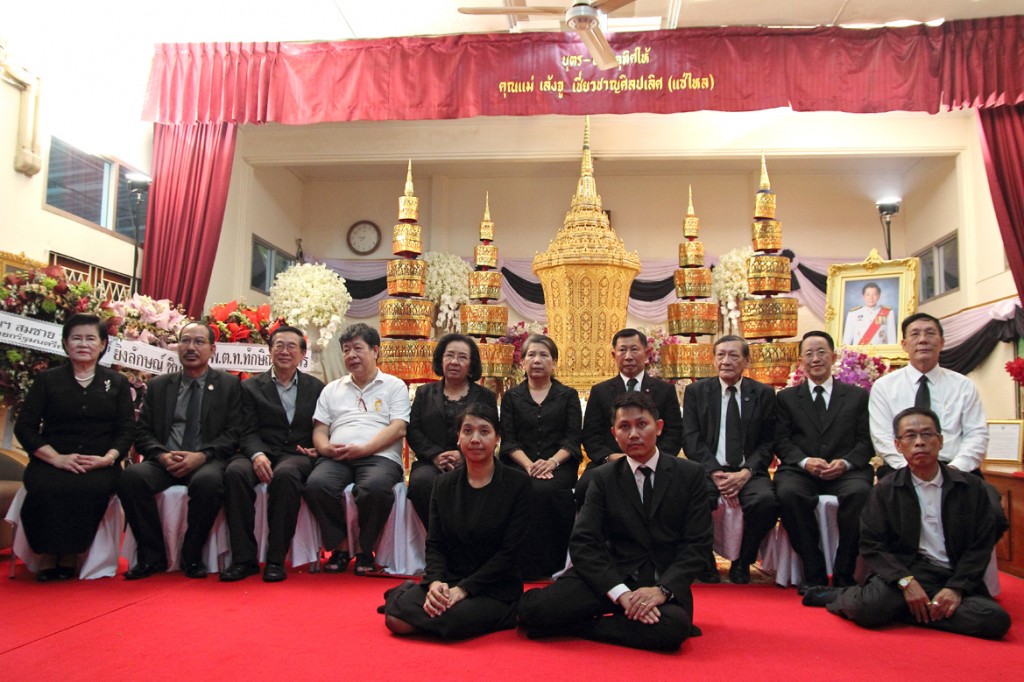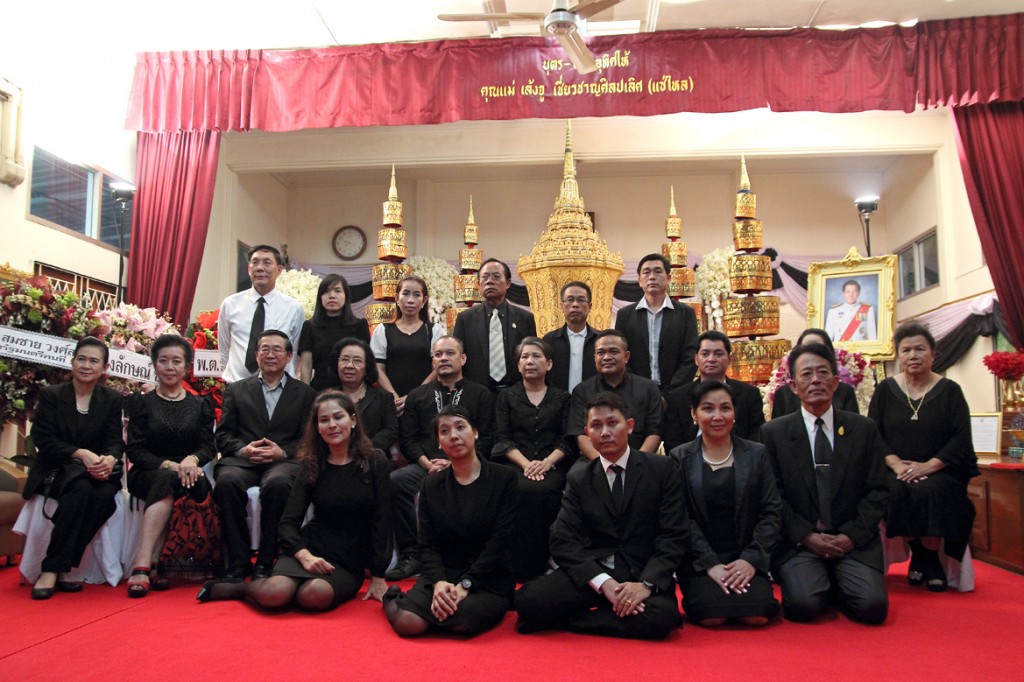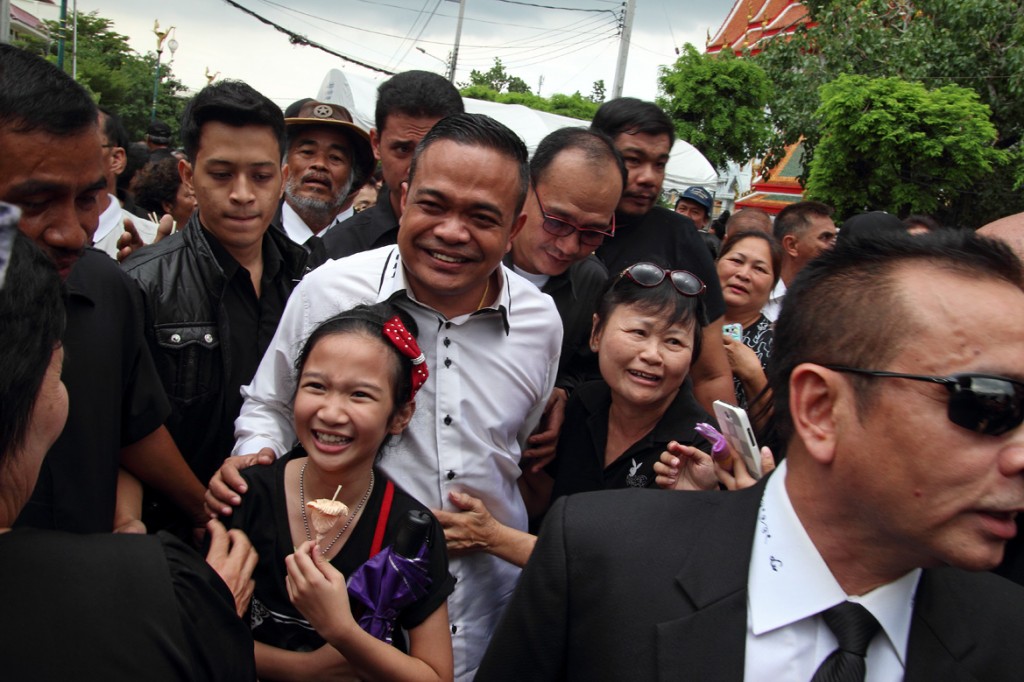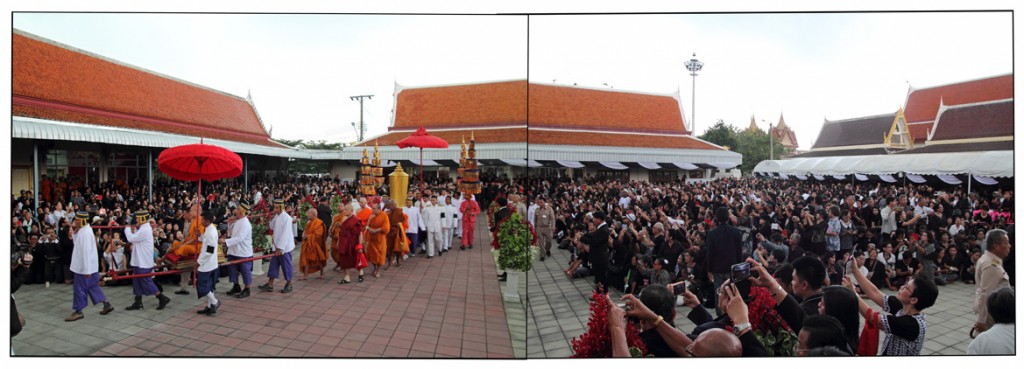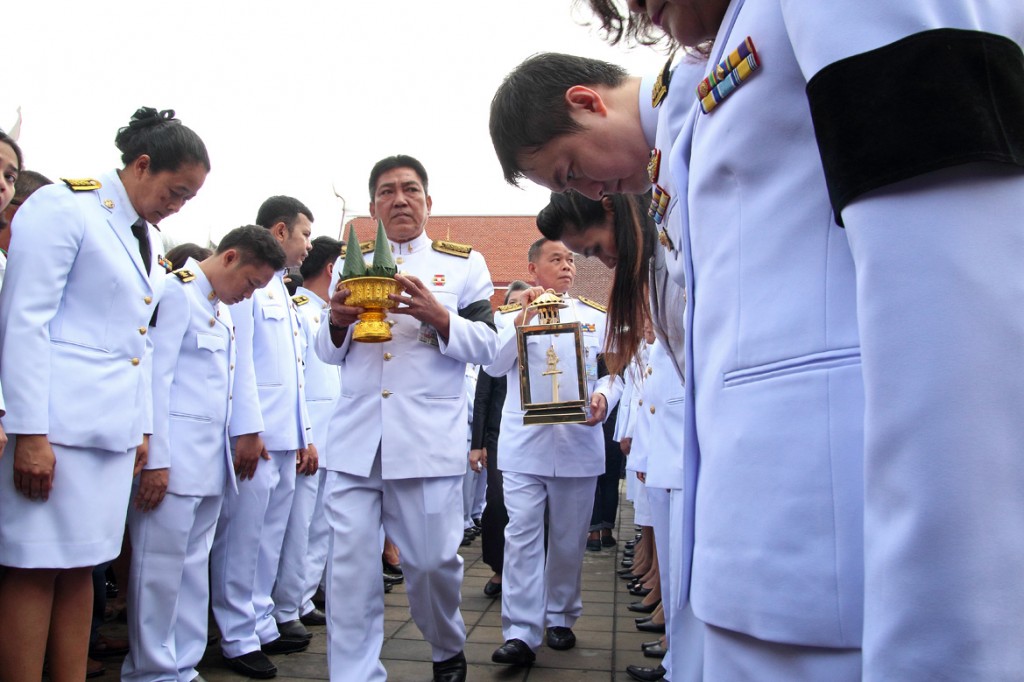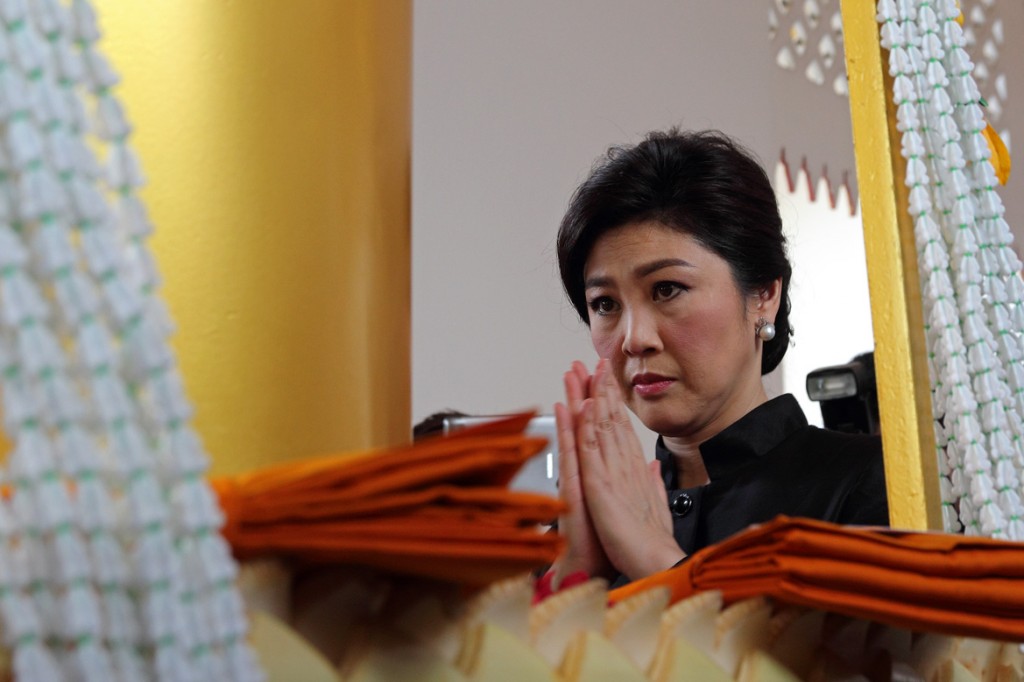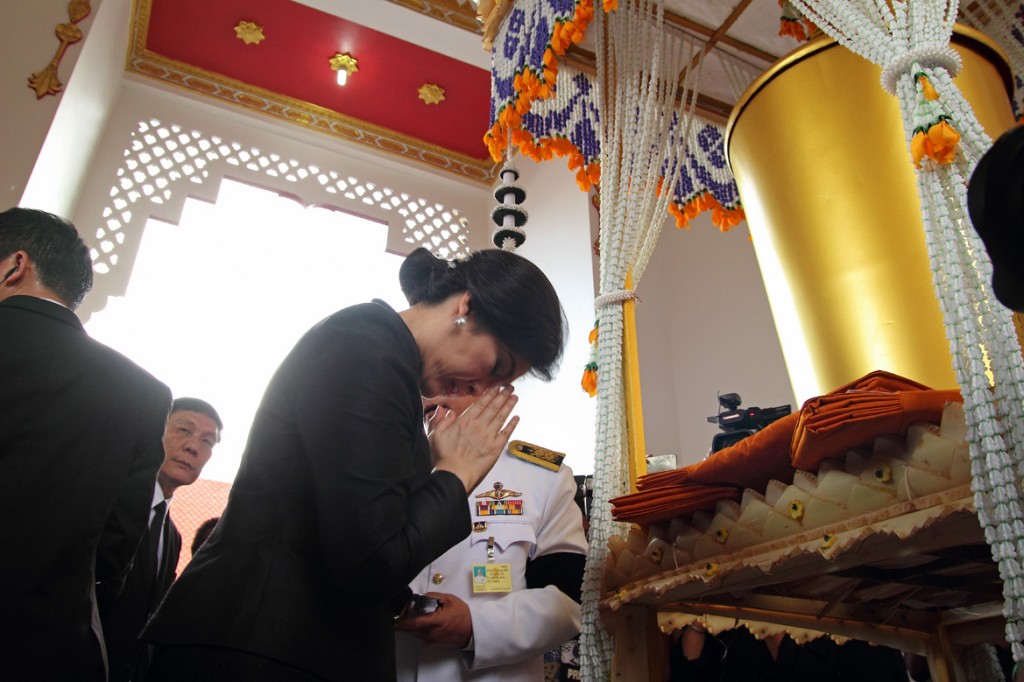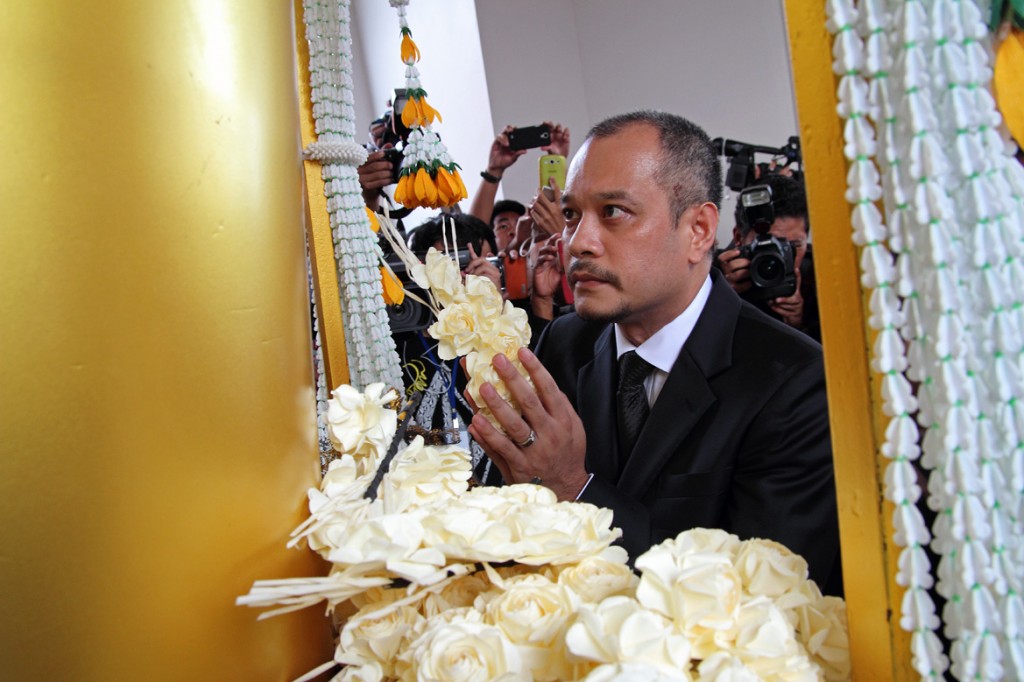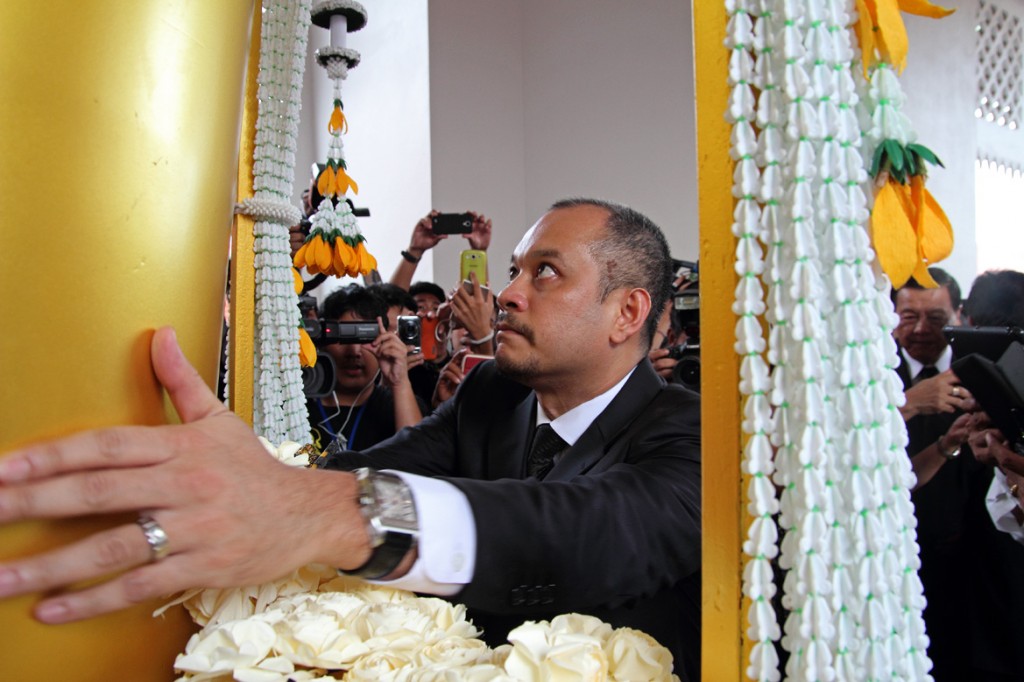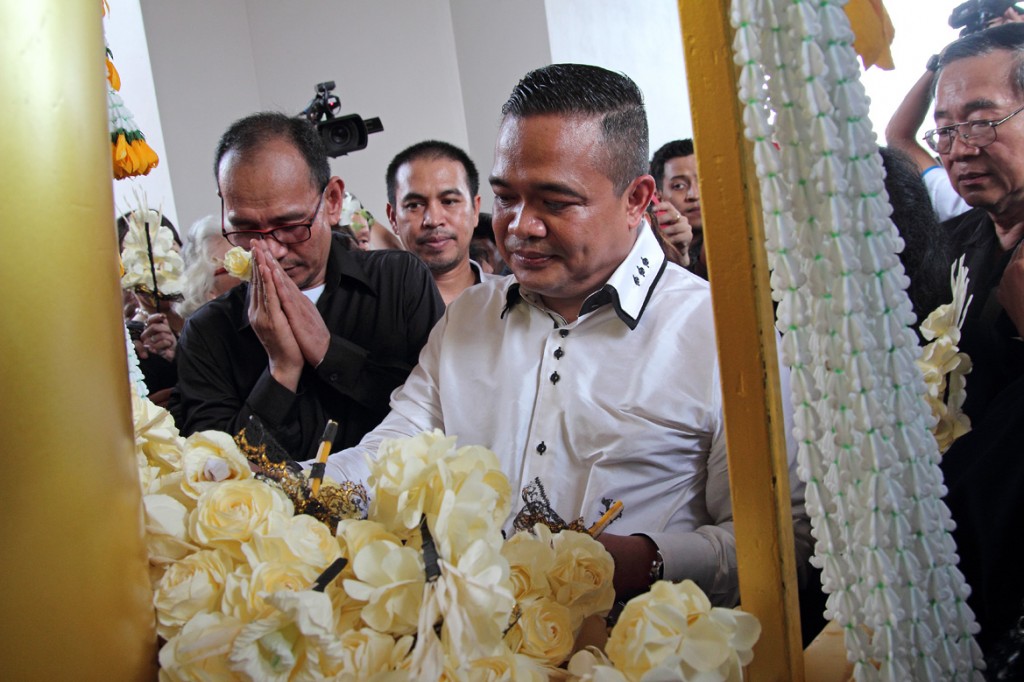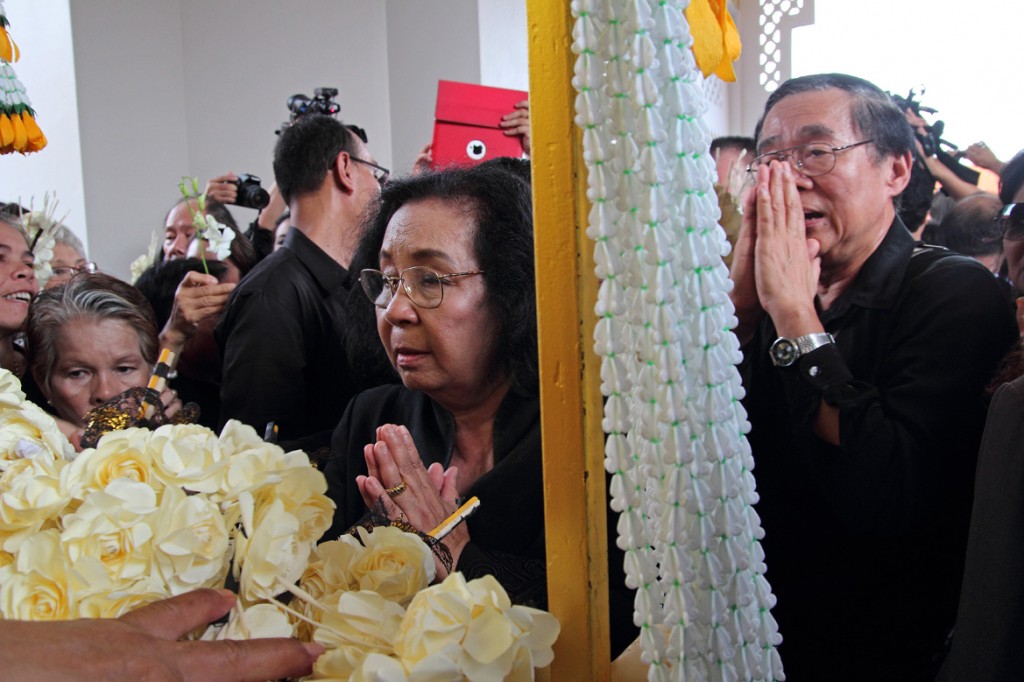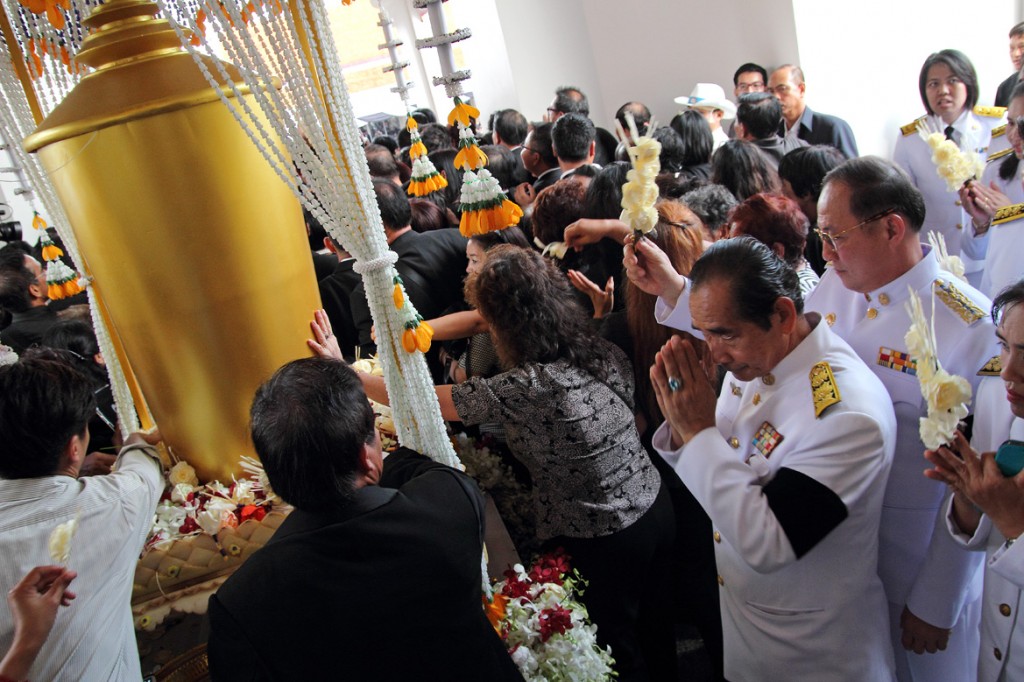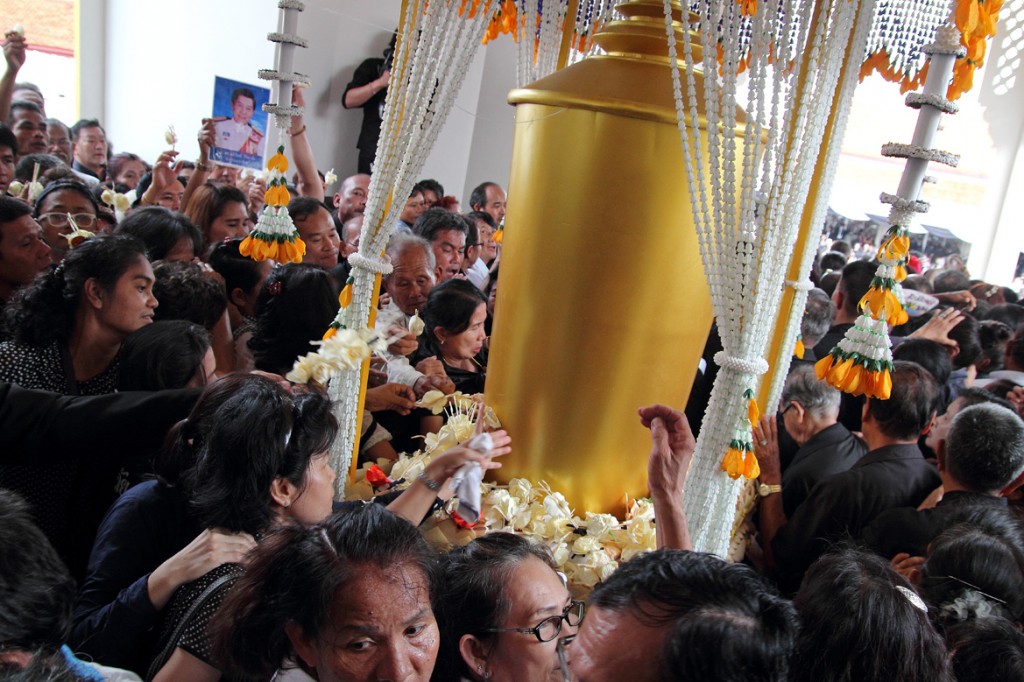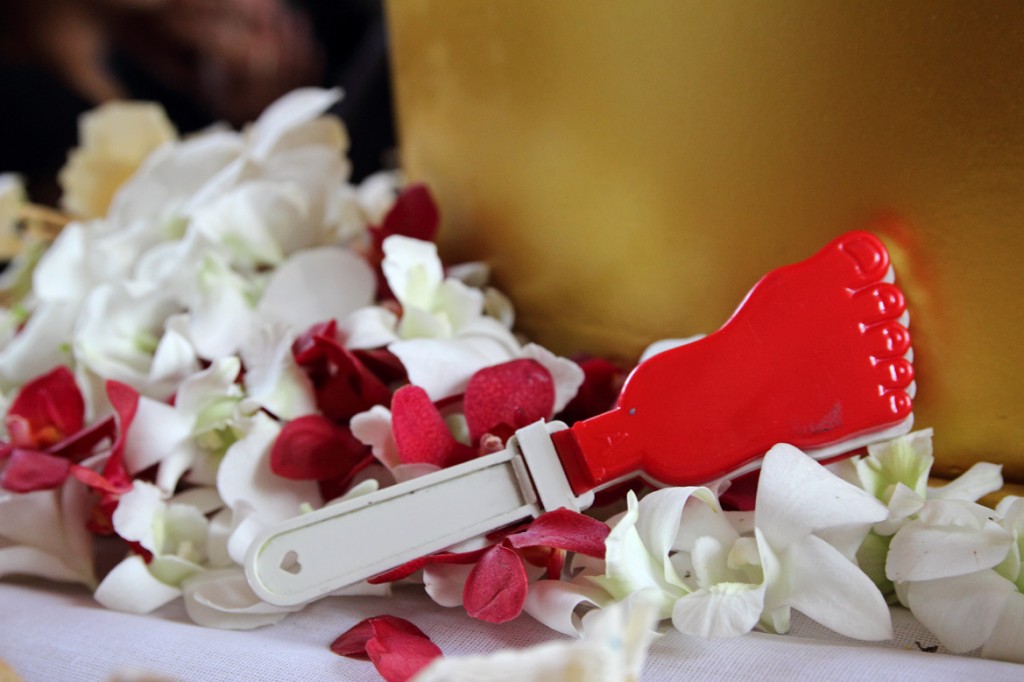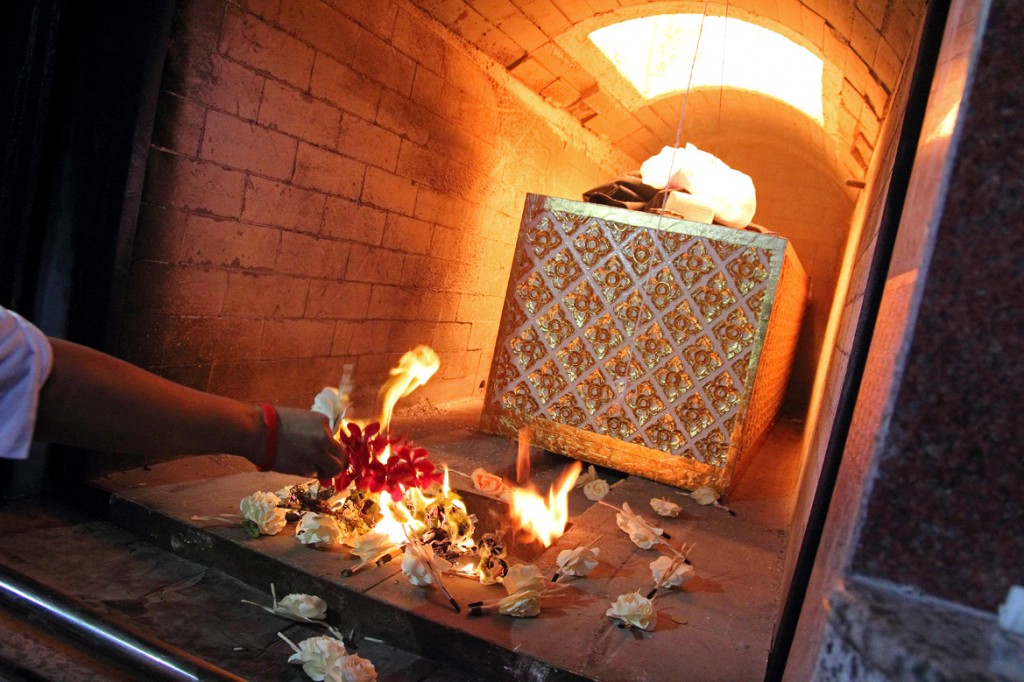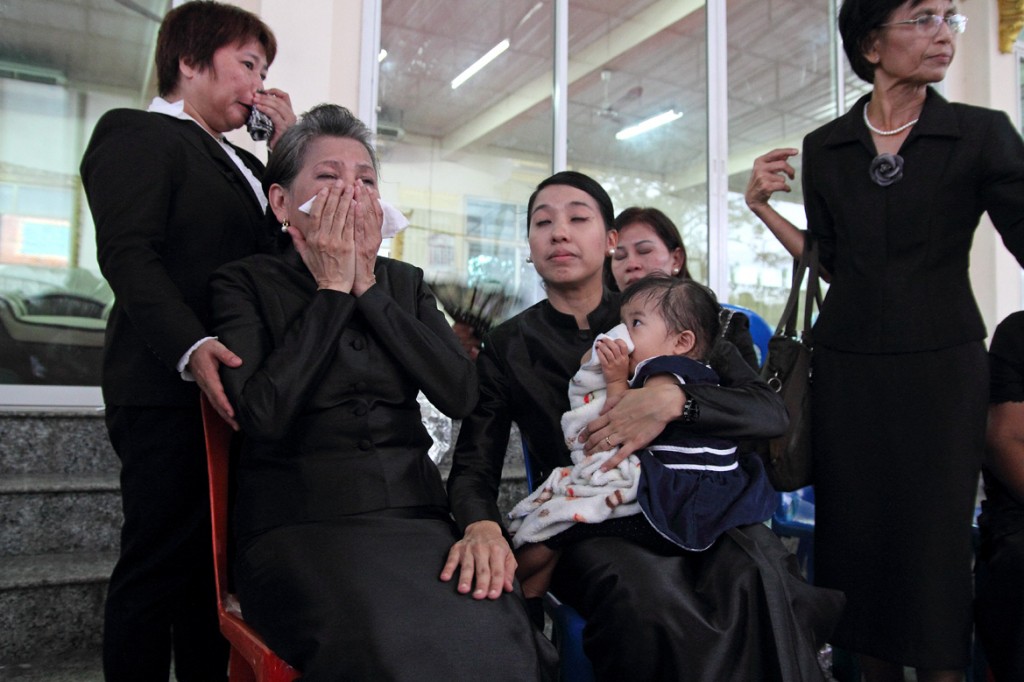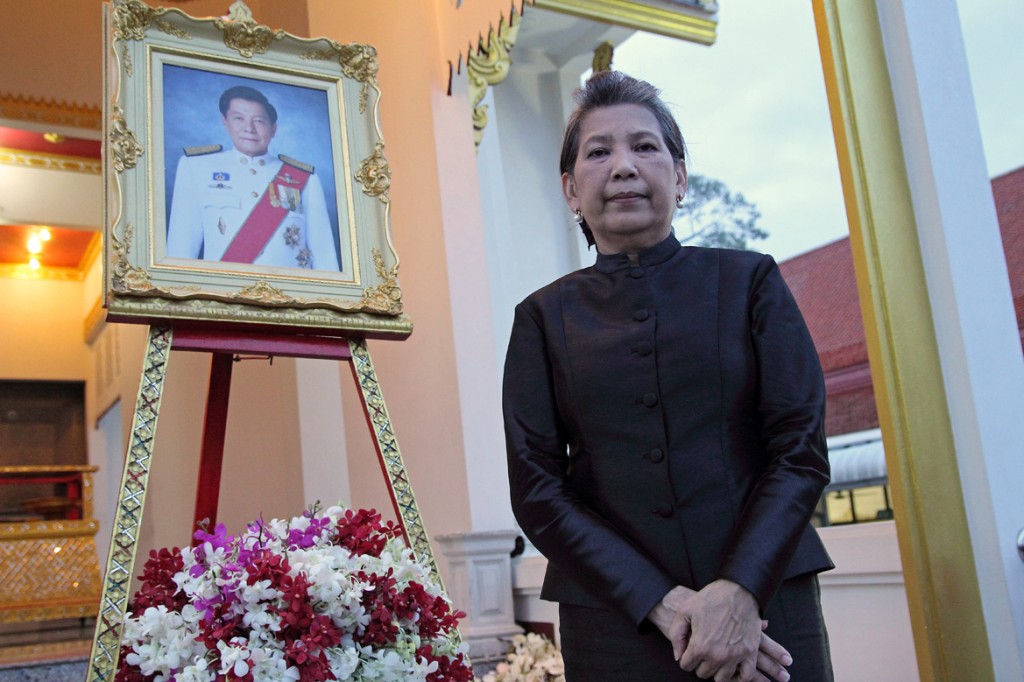**NOTE: This post contains images of Dr Apiwan’s body**
Red Shirt leader and prominent politician Dr. Apiwan Wiriyachai died in exile in the Philippines on 7 October 2014. He fled Thailand after he was charged with lese majeste by the military after the May 2014 coup for a speech he made 3 years earlier on January 2011 in Petchaburi province.
In the Red Shirt movement he rose to enormous prominence when he, together with fellow Pheu Thai MP Sunai Chulapongsatorn, became regular speakers of the now defunct Daeng Siam group.
Daeng Siam and affiliated groups have rallied mostly in abolition of the lese majeste laws, and were seen by the establishment as anti-monarchist. Most prominent speakers and leaders of the former Daeng Siam and affiliated groups are now either in prison (Somyot Prueksakasemsuk, leader of the 24th of June Group and editor of the magazine Voice of Thaksin) or in exile (the group’s leader Surachai Sae Dan, Sunai Chulapongsatorn, historian Somsak Jeamteerasakul, and many of the founders and members of the band Fai Yen).
I once asked Dr Apiwan why he took the risk of speaking at Daeng Siam events, and he answered that while he strongly believed in the abolition of the lese majeste laws and reforms, he also tried to prevent the many young students involved with Daeng Siam from turning too radical as he was very concerned for their wellbeing.
The military government asked that the funeral not be turned into a political event, and political speeches were not held nor were visitors allowed to wear red shirts and Red Shirt insignia. Initially Red Shirts planned to accompany Dr Apiwan by motorcade to Wat Bang Phai temple in Nonthaburi, and several Red Shirt groups planned to join the procession along the way. The coffin was however rushed by the authorities to the temple without a Red Shirt motorcade, just accompanied by several police cars.
The funeral, however, was by its nature political. For the Red Shirts it became another symbol of their victimization, and at the same time a show of force and resistance. For the first time after the military coup Red Shirts were able to meet in public on such a large scale — with their leaders and also with politicians of the Pheu Thai Party. During one of those days two Red Shirt women approached me and said that as a foreign reporter I should report that the Red Shirts are still alive and that the claims that the Red Shirts were dissolved and in disarray were lies.
Dr Apiwan was loved and respected throughout the many various Red Shirt groups and in the affiliated Pheu Thai Party as the huge turnout at the funeral proceedings has shown. Many people from all across the Red spectrum have joined.
Three former Prime Ministers – Yingluck Shinawatra, Chavalit Yongchaiyuth and Somchai Wongsawat – took part, many former ministers and MPs of the Pheu Thai Party (former foreign minister Surapong Tovichakchaikul, former education minister Chaturon Chaisaeng, former Interior Minister Yongyuth Wichaidit, former House Speaker Yongyuth Tiyapairat, Suranand Vejajjiva – former Secretary General to the PM, and many others), and almost all UDD leaders (most of them came every day, such as Tida Thawornset, Weng Tojirakan, Jatuporn Prompan, and Nattawuth Saikua). Sombat Boonngamanong made his first public appearance after his arrest and release from bail, many community radio station activists came.
Also Red Shirt affiliated academics such as Suttachai Yimprasert and several Nitirat academics including Worachet Pakeerut made their appearance.
Due to Dr Apiwan’s rank as colonel in the military, royal sponsorship was granted for his funeral and it became an extraordinarily beautiful affair with elaborate rites. For the first three days monks from Wat Saket chanted special ancient sutras (“suat mon”) different from normal funerals and a special bathing ceremony was given with sacred water and scented oils from the palace. At the day of the cremation a special procession around the crematorium with music and monks on litters took place, and the flame to incinerate the coffin was brought from the palace.
I saw Dr Apiwan’s widow lose her composure only twice during the funeral – when the coffin arrived at the temple, and during the cremation. Yet her husband’s funeral was also a source of pride for her, for the respect and honor Dr Apiwan was given by the thousands of people who took part
11 October 2014, the coffin arrives at Wat Bang Phai:
Yonguth Tiyapairat comforts Dr. Apiwan’s widow
A Red Shirt protester cries; she said how she remembered Dr Apiwan led her out of Wat Patum after the 2010 crackdown against the Red Shirts
12 October 2014, the first day, and the bathing ceremony:
For hours, thousands of Red Shirts and their leaders poured sacred water over Dr. Apiwan’s hand
Dr Apiwan’s family prays at his corpse
Sacred water and scented oils are brought by palace officials
Sanoh Tienthong and Veerakan Musikapong give their respects
Yonguth Tiyapairat pours sacred water and scented oil over Dr Apiwan’s corpse
When the bathing ceremony is finished, palace officials erect screens to block the view, perform rites and dress Dr Apiwan in clothes provided by the palace, and his corpse is placed in the coffin.
12 October 2014, former Prime Minister Yingluck Shinawatra presides over the funeral:
Yingluck greets Dr Apiwan’s family and pays respect
Sombat Boonngamanong with Red Shirts
13 October 2014, Pheu Thai MPs from Central Thailand and the Northeast preside over the funeral:
14 October 2014, General Chavalit Yonchayut presides over the funeral:
15 October 2014, Somchai Wongsawat at the funeral:
17 October 2014, Somchai and Yaowapa Wongsawat:
18 October 2014:
19 October 2014, the cremation day:
The procession around the crematorium
The flame arrives from the palace
Yingluck leads the rites
One Red Shirt smuggled a small foot clapper in, and placed it as an offering to Dr Apiwan
 Facebook
Facebook  Twitter
Twitter  Soundcloud
Soundcloud  Youtube
Youtube  Rss
Rss 